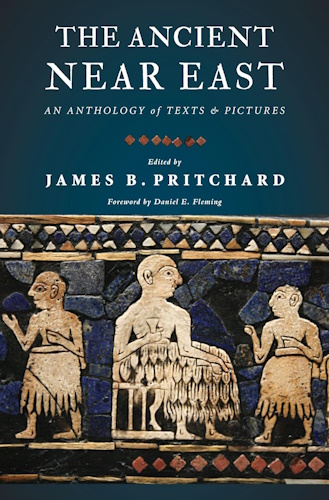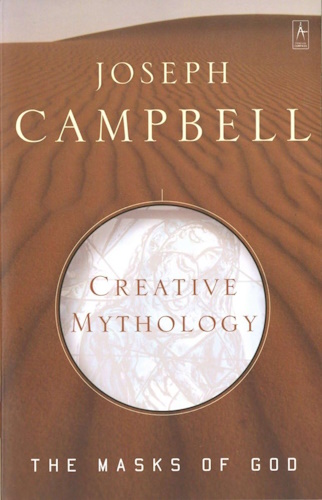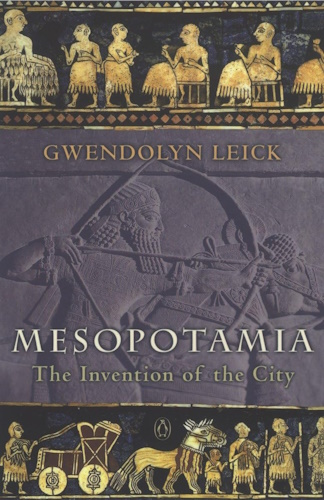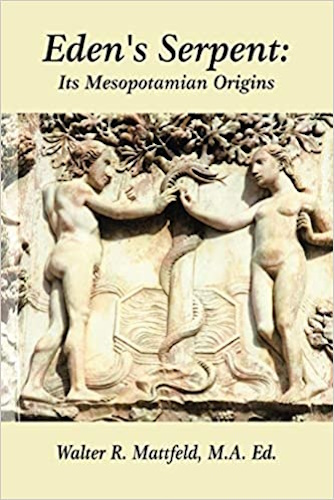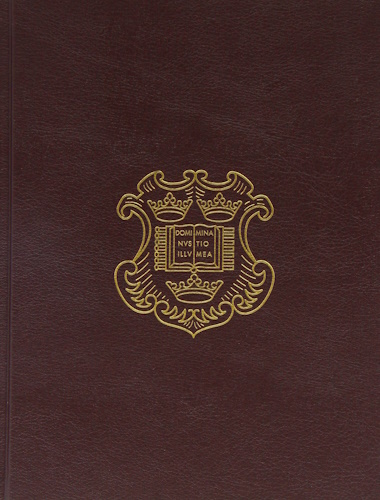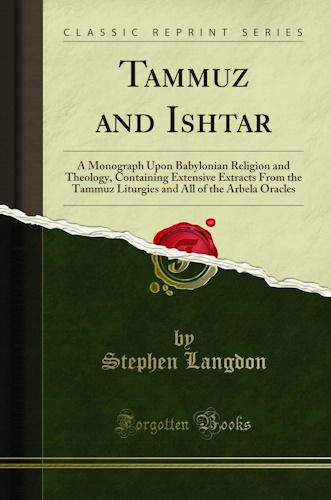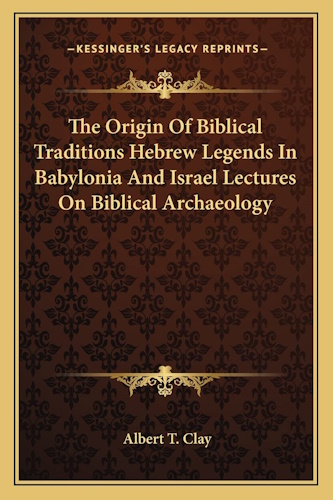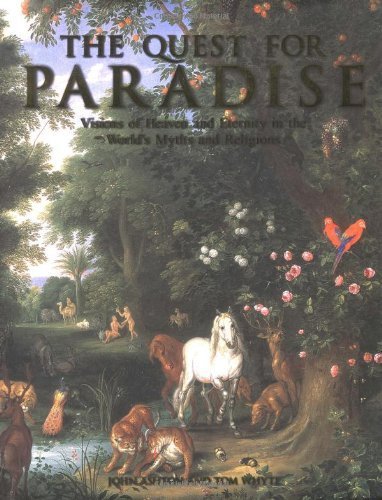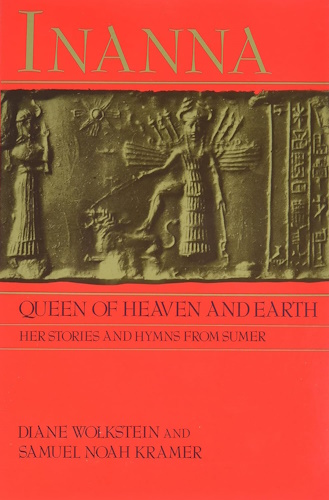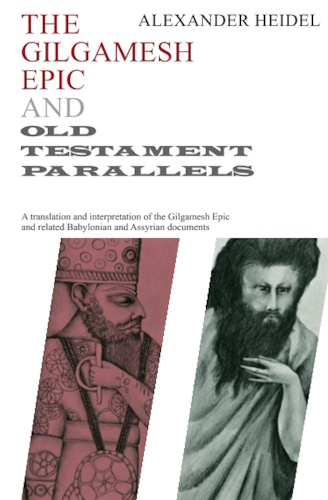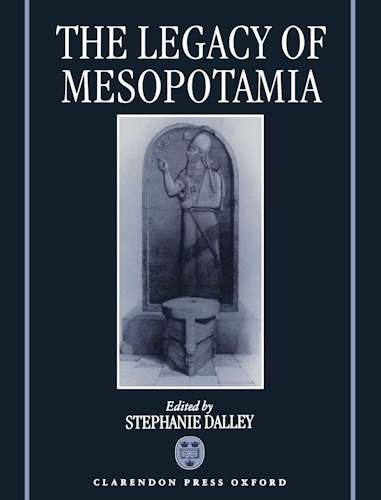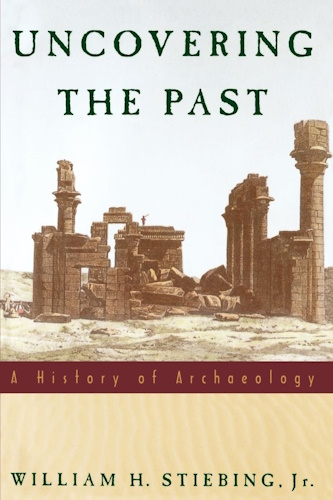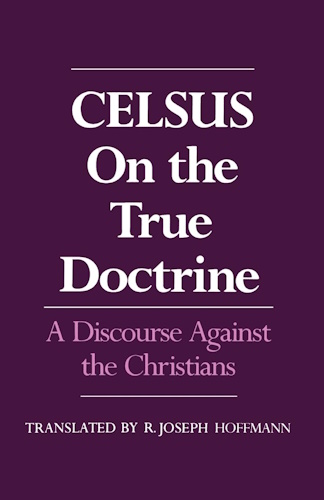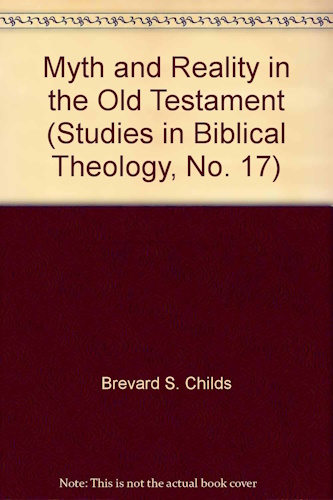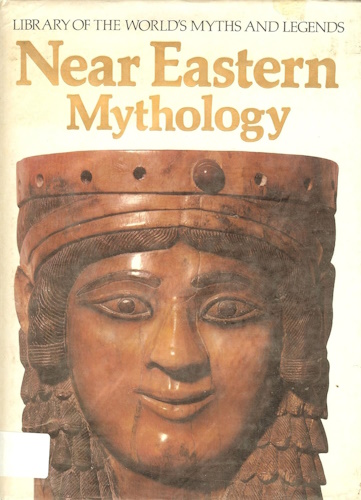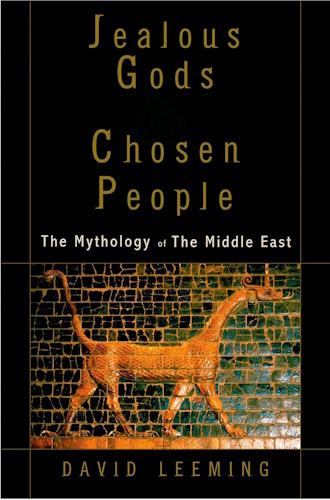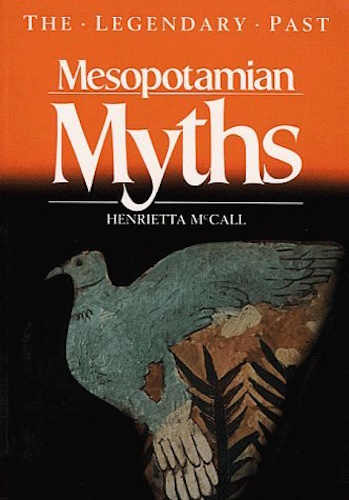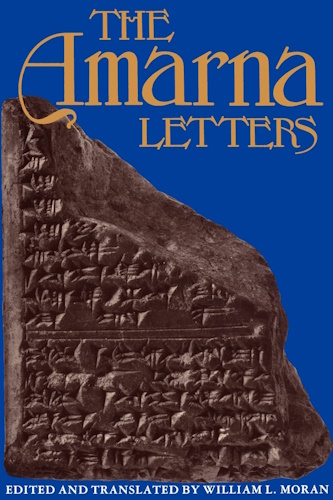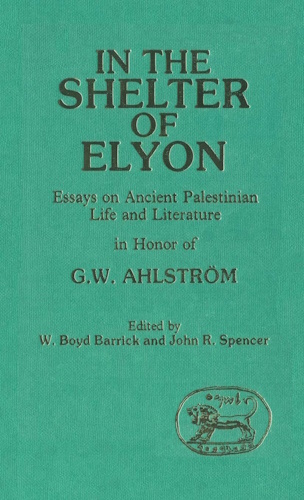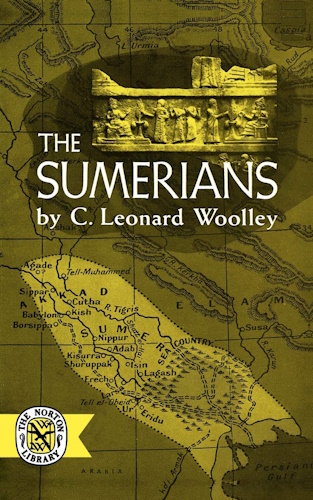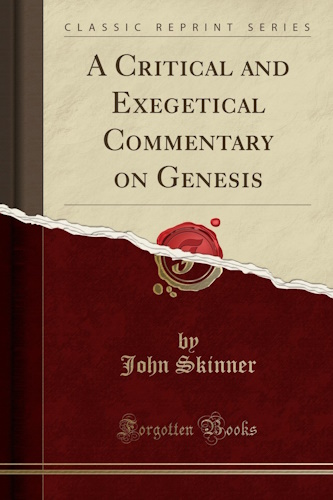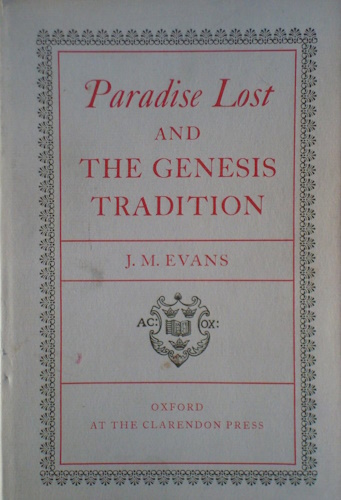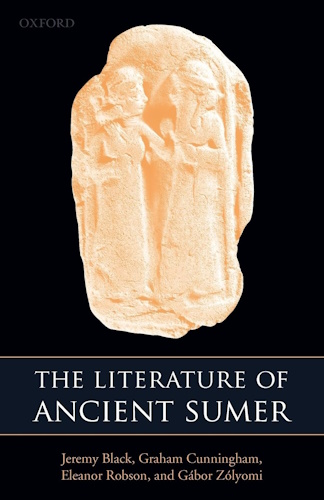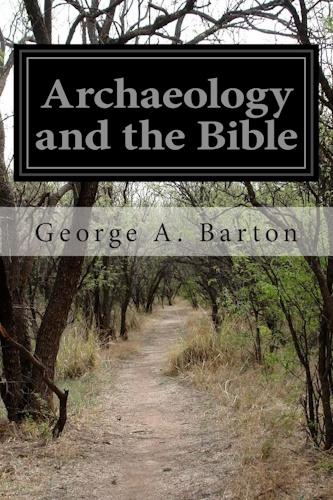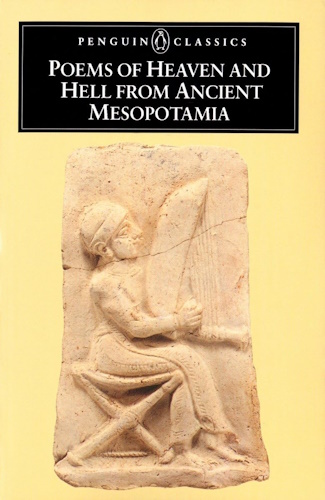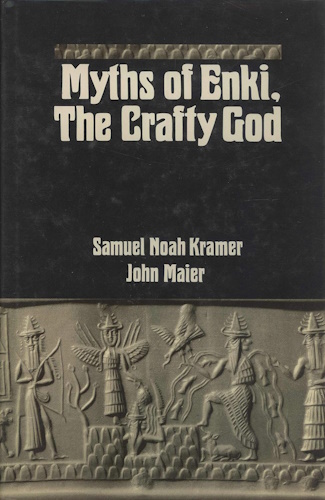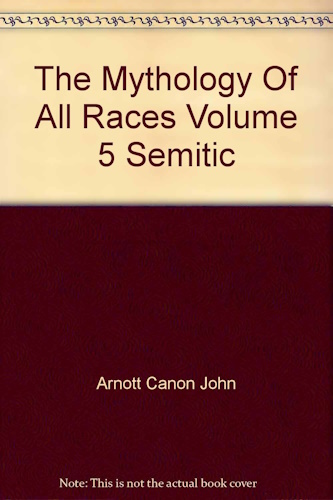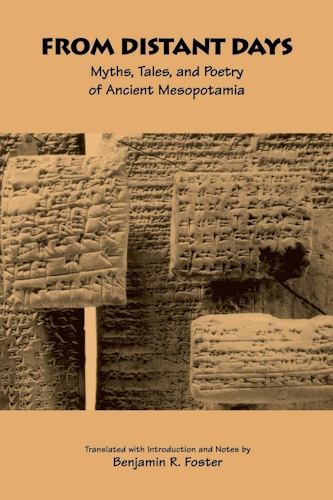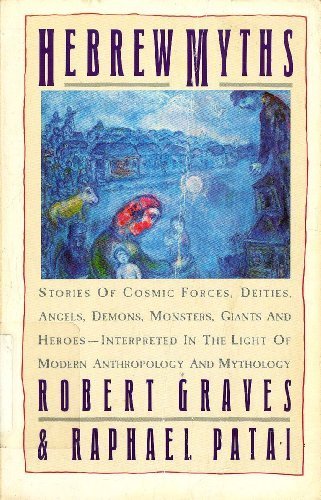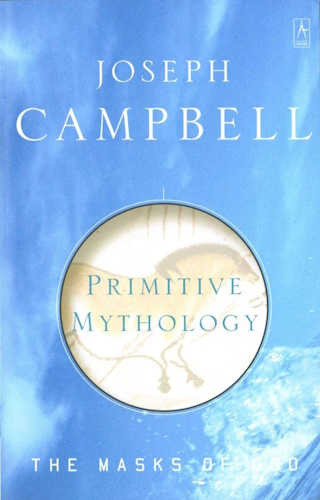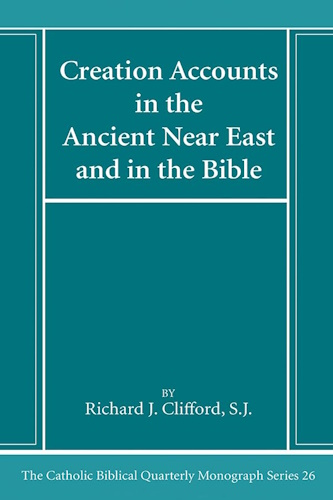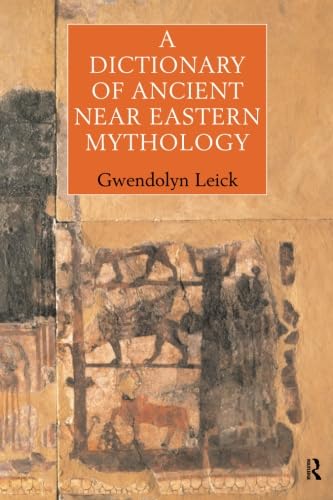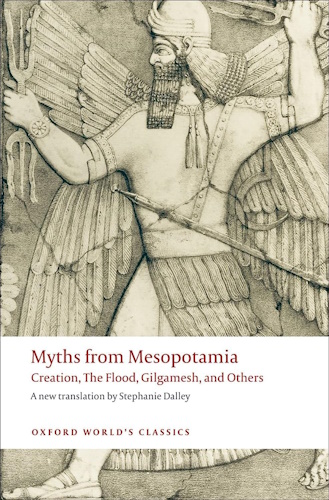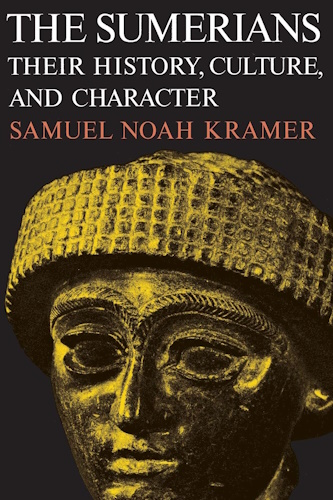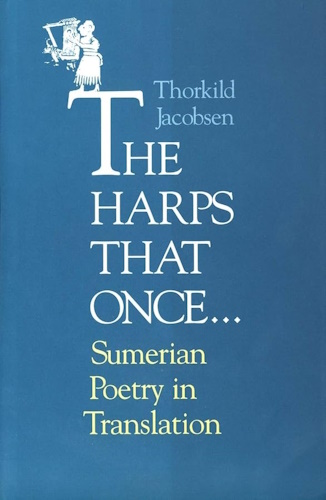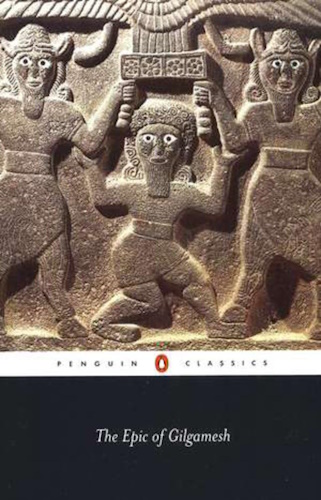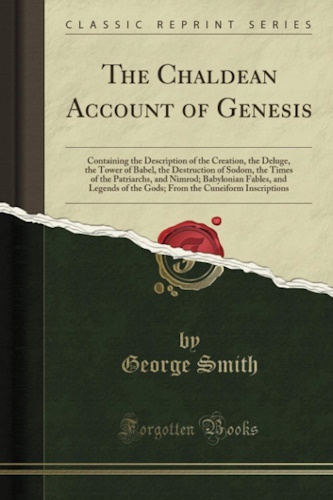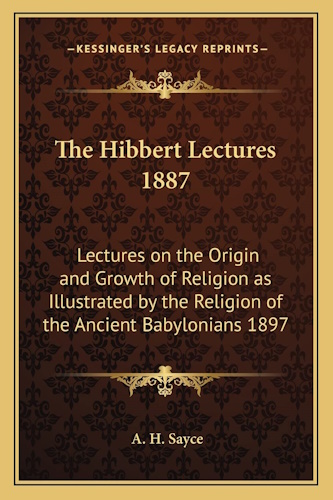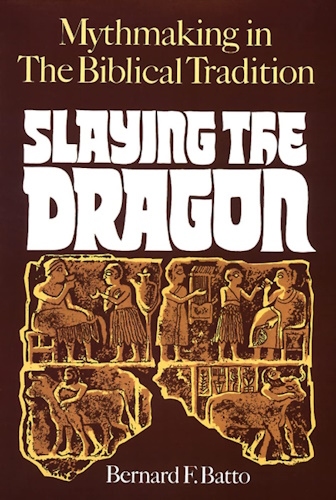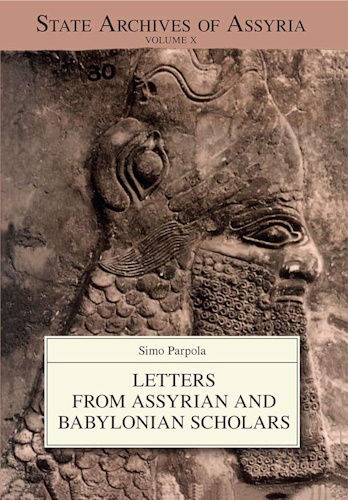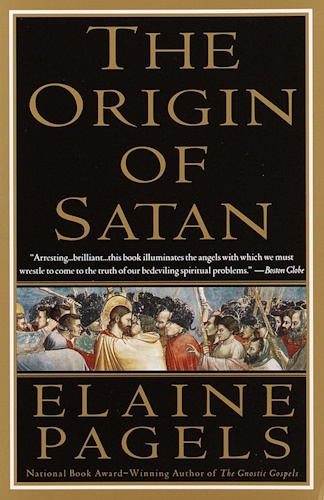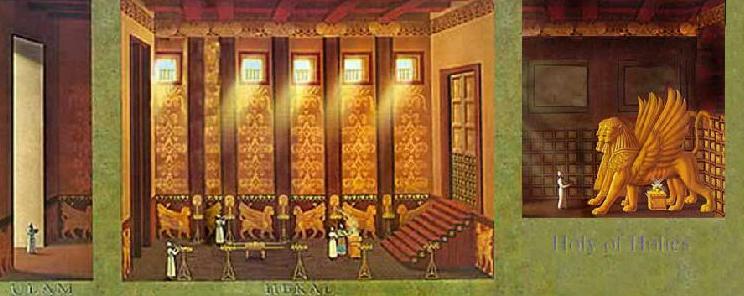![]()
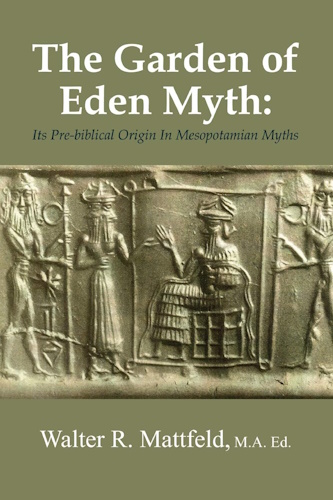
Bible Origins
The Garden of Eden's
Pre-biblical Prototypes:
The City-gardens of Eridu and Nippur
in the Edin/Eden of Sumer
Part Two
by
Walter Reinhold Warttig Mattfeld y d la Torre, M.A. Ed.
e-mail contact
26 Nov 2005
Revisions through: 12 June 2009
![]()
Professor Batto (1992) on the Hebrews recasting of earlier Mesopotamian myths and motifs in the Hebrew Bible:
"...I want to emphasize that this new mythmaking process is a conscious, reflected application of older myths and myhic elements to new situations...In so far as one admits the presence of myth in ancient Babylonian and Canaanite culture, then one must also admit the presence of myth in the Bible...This book, then, is a series of case studies of mythmaking in ancient Israel, or to be more exact, in the biblical tradition." (pp. 13-14. "Introduction." Bernard F. Batto. Slaying the Dragon, Mythmaking in the Biblical Tradition. Louisville, Kentucky. Westminster/John Knox Press. 1992)
"Now the Yahwist's primeval narrative is itself a marvelous example of mythmaking based upon prior Mesopotamian myths, notably Atrahasis and Gilgamesh. Interestingly, the reappropriation of mythic traditions and intertextual borrowing posited for biblical writers was already present within ancient Babylonia, and illustrates that biblical writers must be understood within the larger ancient Near Eastern literary and theological tradition." (p. 14. "Introduction." Bernard F. Batto. Slaying the Dragon, Mythmaking in the Biblical Tradition. Louisville, Kentucky. Westminster/John Knox Press. 1992)
"The theme of this volume...is, of myth and mythmaking speculation within the Hebrew Bible...biblical writers employed much the same techniques and even the same mythic motifs as their ancient Near Eastern neighbors...Israel...drew heavily upon the Babylonian myth of Atrahasis, supplementing with motifs from Gilgamesh and other traditional myths, to create a specifically Israelite primeval myth...Like their ancient Near Eastern counterparts, Israel's theologians were concerned with the place of humankind -and particularly of their own people- within the realm of being." (pp. 168-169. "Conclusion." Bernard F. Batto. Slaying the Dragon, Mythmaking in the Biblical Tradition. Louisville, Kentucky. Westminster/John Knox Press. 1992)
"The focus of this volume has been the various ways in which biblical writers throughout the history of the composition of the Hebrew Bible have used and reused myth...to undergird their religious and/or sociopolitical agenda. My purpose...has been only to show through representative examples how biblical authors actually went about using mythic motifs in their writing and how they consciously manipulated these to serve their specific purposes." (pp. 171-172. "Conclusion." Bernard F. Batto. Slaying the Dragon, Mythmaking in the Biblical Tradition. Louisville, Kentucky. Westminster/John Knox Press. 1992)
It is most likely that man came to clothe himself NOT because he was "embarrassed" about being "naked," but because he needed to protect himself from the elements, a sun that could give him severe sunburn, brambles and thorns that could tear his flesh as he accidently brushed against them in pursuit of food; and to ward off the cold of the night in the desert, when hot daytime temperatures could plummet leaving him freezing.
As earlier stated, it is my conviction that Sumer's priests WRONGLY ascribed man's acquistion of civilization to the gods' bestowing this knowledge on him, denying him the glory of self-discovery and self-improvement and SELF-EVOLUTION from naked beast to a civilized clothes-wearing city dweller.
Clifford noted that Sumerian myths understood "civilization" was not of man's doing, it was of the gods' doing:
"...the human race was originally created animal-like, with no cities and culture, and only subsequently was it given the arts making life humane and bearable." (p. 44. "Rulers of Lagash." Richard J. Clifford. Creation Accounts in the Ancient Near East and in the Bible. Washington D.C. The Catholic Biblical Association of America. The Catholic Biblical Quarterly Monograph Series 26. 1994. ISBN 0-915170-25-6 paperback)
"The text begins with An on the hill of heaven and earth generating the gods, who are divided into the great divinities and the lesser gods. The gods are without the sustenance provided by grain and flocks. There were human beings at that time but they were like animals, living without clothing and without the sustenance provided by grain and flocks. The gods discover the advantages of agriculture and animal hubandry for themselves but their human servants, without those means, could not satisfy them. Enki, wishing to increase human efficiency for the ultimate benefit of the gods, persuades Enlil to communicate to the human race the secrets of farming and animal husbandry." (p. 46. "Ewe and Wheat." Richard J. Clifford. Creation Accounts in the Ancient Near East and in the Bible. Washington D.C. The Catholic Biblical Association of America. The Catholic Biblical Quarterly Monograph Series 26. 1994. ISBN 0-915170-25-6 paperback)
"Upon the Hill of Heaven and Earth
When An had spawned the divine Godlings,
...wheat...and Ewe...
Were unknown...
there was NO CLOTH to wear...
The people of those distant days,
They knew not BREAD to eat;
They knew not cloth to wear;
They went about with NAKED limbs in the Land,
And like sheep they ate grass with their mouth,
Drinking water from the ditches."
(p. 45. "Ewe and Wheat." Richard J. Clifford. Creation Accounts in the Ancient Near East and in the Bible. Washington D.C. The Catholic Biblical Association of America. The Catholic Biblical Quarterly Monograph Series 26. 1994. ISBN 0-915170-25-6 paperback)
Grain's/Wheat's (personified) refuting Sheep's/Ewe's (personified) claim as to who benefits man more:
"Your shepherd on the high plain eyes my produce enviously; when I am standing in the furrow in the field, my farmer chases away your herdsman with his cudgel. Even when they look out for you, from the open country to the hidden places, your fears are not removed from you: fanged (?) snakes and bandits, the creatures of the desert, want your life on the high plain."
(lines 123-129. "The debate between Sheep and Grain: Translation." http://etcsl.orinst.ox.ac.uk/section5/tr532.htm )
sipad-zu nij2-ju10-ce3 an-edin-na igi-bi im-ci-jal2
124 isin-na a-cag4-ga jal2-la-ju10-ce3
125 engar-ju10 na-gada-zu jictukul-ta mu-un-sar-re
126 ki-ta ki sig9-ga-ac u3-mu-e-re-kij2
127 za-e-ra ni2-zu nu-mu-un-ta-ed3-de3
128 muc jiri2 lu2 la-ga nij2 edin-na-ke4
129 zi-zu an-edin-na ku-kur ba-ni-ib-be2
The Sumerian an edin-na (an = high + edin-na =plain) is rendered variously as a "high" desert, steppe, wilderness or plain where shepherds graze their sheep and goats; Note that this edin is characterized as being a place of danger, inhabitated by snakes and other predatory creatures of the desert (leopards, lions, and hyenas) which seek the "sheep's life," but this can apply to man just as well. Edin is not a pleasant, idyllic place of tranquility where sheep and man have no fear its wild animals. The Mesopotamians understood man had been created to care for the gods' city-gardens and present them their produce for their sustenance. These gardens which produced grain for bread and beer, fruit-trees, and assorted vegetables were surrounded by uncultivated steppeland called the edin where shepherds grazed their flocks (the gardens themselves were never called edin). As noted in these verses, the farmer was vigilant to keep out of his garden-fields of grain, the shepherd of edin and his foraging flocks. Foraging wild animals would be just as unwelcome in the gods' city-gardens. I understand that the Hebrews are denying, challenging and refuting the Mesopotamian notions about the relationship between man, wild animals and the gods' gardens by recasting all of the above as a series of inversions or reversals of Mesopotamian concepts. For the Hebrews there is no danger for man from wild animals in Eden, all are free to feed off the plants in God's garden, which is not a city-garden, but in the midst of a region called Eden.
Leick on the an edin being a place of "abundant forage" for wild and domesticated animals, rather like the Garden in Eden. Note: This notion appears to _contradict_ the edin being always a semi-arid, desolate location (Emphasis mine):
"Shakan/Shakkan, Sumerian god...The etmology is doubtful, but the name seems to denote some four-legged animal...he is...the hero who is the crown of the high plain...in charge of an.edin, the high plain, a 'good place complete with grass, herbs and abundance,' teeming with cattle and the 'wild rams of the pasture'."
(p. 147. "Shakan/Shakkan." Gwendolyn Leick. A Dictionary of Ancient Near Eastern Mythology. London. Routledge. 1991, 1996, 1997, 1998)
Moran on man being "a savage or beast" in the beginning according to Mesopotamian thought (brackets [ ] are mine):
"...Enkidu. As created by the gods, he is a savage, hairy wild man who lives on the steppe with the animals and acts as their friend...Enkidu is modeled on a concept of antiprimitivism found elsewhere in Sumerian, Babylonian and classical sources. According to this notion, the beginning of human existence was neither a golden age nor a period of pristine simplicity. On the contrary, life was savage, and man differed little, if at all, from other animals. Primal man was a beast, and the Babylonian Enkidu was primal man redivivus [brought back to life again], a figure who introduced into the epic a sharp nature-culture contrast that became a recurrent theme.
The humanization of Enkidu begins with seven days of uninterrupted lovemaking with a harlot sent into the steppe to seduce him."
(p. 173. William Moran. "The Gilgamesh Epic: A Masterpiece." Benjamin R. Foster. The Epic of Gilgamesh. [A Norton Critical Edition]. New York & London. W. W. Norton & Co. 2001. paperback. ISBN 0-393-97516-9)
In the below myth Enlil makes man of clay at Nippur where he resides. The poem honors the hoe which makes possible irrigation channels for gardens. It also digs up clay that man is made from. The Atrahasis Flood myth declares man is made of clay ( titti ). Perhaps the poet is being 'playful" in claiming man "sprouts up from the clay" or earth at Nippur when hoed by Enlil ? The hoe digs up clay to make bricks for cities and temples. In another myth, Enlil, at Nippur, is facing a rebellion of the junior gods called the Igigi, who object to the non-stop work of the past 40 years in his garden, dredging irrigation canals for it. Enki is summoned from Eridu and he decides to make man of clay mixed with the blood of one of the rebelling Igigi gods. Man will replace the junior gods as agriculturalists. Now the Igigi will enjoy for eternity the rest from toil enjoyed previously only by the elder Anuna (Annunaki) gods like Enlil and Enki. Man's creation at Nippur in the below poem is confusing, some verses speak of him "sprouting up from the earth" when the hoe breaks up the clay, other verses suggested that the clay which has been hoed up is placed in a brickmold, man being envisioned as being "molded"? In either event, Man's creation is associated with Enlil and Nippur. In other myths Enlil decides man must be destroyed by a flood for disturbing his sleep by night and rest by day. Enki of Eridu, however warns Ziusudra (Atrahasis) of Shuruppak of the flood, telling him to build a boat and save self, familes and animals, which he does. After the flood Enlil is enraged that there are human survivors. Enki intervenes and pleads with Enlil to never send another flood against mankind. Enlil agrees and then "blesses" the flood survivors Ziusudra and wife. I understand that Enlil who separated heaven from earth and who had man made to work in his garden at Nippur, who sent a flood to destroy man, then blesses its survivors, has been merged with Enki to become Yahweh-Elohim in the garden of Eden.
"-Enlil who will make the seed of mankind rise from the earth-
not only did he hasten to separate heaven from earth,
(....) and earth from heaven,
but, in order to make it possible for humans to
grow "where the flesh sprouts,"
he first affixed the axis of the world in Duranki...
Here "where the flesh sprouts," he set this very hoe to work:
he had it place the first model of mankind in the
brickmold.
And according to this model his people started
to break through the soil towards Enlil,
and he looked approvingly at his blackheaded people."
Now the Anuna-gods stepped up to him: (....)
they wanted to demand the "blackheaded people"
from him.
The lady who (once upon a time) had given birth to the ruler, who had given birth to the king,
Ninmena now set the human reproduction going...
The hoe makes (everything) prosper, the hoe
makes (everything) grow lush,
the hoe (means) good barley...
The hoe (has to do with) the brickmold, the hoe
has made mankind appear...
The hoe and the basket are the tools for building cities."
(pp. 511-513. Gertrud Farber. "The Song of the Hoe." William W. Hallo. Editor. The Context of Scripture, Canonical Compositions from the Biblical World. Leiden, New York, Koln. Brill. 1997. ISBN 90-04-10618-9. Vol. 1.)
Professor Hallo has proposed that some of Genesis' motifs may have been inspired by earlier Mesopotamian "creation of man compositions," such as the so-called "Eridu Genesis myth," I concur (Emphasis mine):
"The fragment here translated was written at some time around 1600 BC...The story, which has a structure much like that of the biblical stories in Genesis, dealt with the creation of men and animals, the antediluvian cities and their rulers, and finally the Deluge, paralleling in order the creation, the ante-diluvian patriarchs, and the story of the Deluge in the Bible. IT MAY HAVE SERVED AS MODEL OR INSPIRATION FOR THE BIBLICAL ACCOUNT."
(p. 513. Thorkild Jacobsen. "The Eridu Genesis (1.158)." William W. Hallo. Editor. The Context of Scripture, Canonical Compositions from the Biblical World. Vol. 1. Leiden, New York, Koln. Brill. 1997. ISBN 90-04-10618-9)
Below, the editors of The Epic of Man observation about the "agricultural revolution and domestication of animals" being man's greatest achievement (emphasis mine in CAPITALS):
"The AGRICULTURAL REVOLUTION brought about by early Neolithic men and women stands as the MOST IMPORTANT EVENT IN THE EARLY HISTORY OF MAN. Until cereal plants and animals were domesticated around 10,000 years ago, civilization was impossible; afterward the growth of society was inevitable. It follows that no field of inquiry is more absorbing to many archaeologists than the agricultural revolution."
(p. 64. "Uncovering the Neolithic." Courtland Canby. Editor. The Epic of Man. New York. Time-Life. 1961)
The editors identify Sumer as one of the first great civilizations:
"Some 5,000 years ago, in a desert plain scorched by the sun and nourished by two great rivers, the long progression described in the previous chapters brought man at last to the stage of development we call civilization. The huge span of time called pre-history had ended. History now began.
What is history and what is civilization? The essential element in history is writing, from which the thoughts and events of the past may be read rather than merely deduced from the archaeological relics. Civilization is much harder to define...IT EVOLVED NATURALLY and gradually from life, means and skills of the settled communities described in the previous chapter. Among the components of a civilized society are: the pursuit of knowledge and the arts, a high level of political organization, a complex social and economic order, true specialization in crafts and skills and submission of the individual to the impersonal requirements of the state...Most if not all of these elements depend on the margin of security and leisure that comes only with the evolution of the village into the town and the town into the city...Man's creative fever first struck in the area loosely known as the Middle East. Here, without question, the spark of civilization was kindled. Within the thousand years between 3500 and 2500 BC, the first true cities on earth grew along and near the fertile banks of the Tigris and Euphrates Rivers...A formative period, from 4500 to 2900 BC, witnessed the great transition from simpler societies to civilization. Then came the full flowering of Sumer's civilization during the Early Dynastic period, down to 2400 BC...From the standpoint of science and invention, the formative period was one of the most fruitful phases of human history prior to the age of Galileo and Newton. Out of it came the wheel, the first use of metal in quantity and the world's first known writing. From this followed arithmetic and geometery, the idea of money, an unprecedented abundance of representational art and a monumental architecture."
(p. 67. "The Coming of Civilization." Courtland Canby. Editor. The Epic of Man. New York. Time-Life. 1961)
The editors, from an Anthropological viewpoint, on "how" man came to be an agriculturalist and domesticator of animals:
"The transition from Mesolithic food-collecting to Neolithic husbandry was the longest step toward a stable society mankind had ever taken. It beginnings are not recorded in history, for man had not yet learned to write. But there is reason to believe that the two decisive developments -the cultivation of plants and the domestication of animals- occurred first in the Old World, somewhere among the low, sun-drenched hills that stretch eastward from Asia Minor through northern Iraq and Iran toward the steppes of southern Asia. The best evidence suggests that man began farming between 6000 and 7000 BC, and efforts to determine a more exact date are now being made by the carbon 14 process.
It was certainly no coincidence that man first converted his sweat into BREAD in the same general region, which, it is said, sheltered the Biblical Garden of Eden. As yet unravaged by man, it rolled toward the mountains and seas, an open, fertile parkland studded with trees and natural meadows of wild wheat and barley. Here was an ideal amphitheater for the agricultural revolution. The basic crops were present in the wild state, and so were the basic animals -sheep, goats, cattle and pigs. There were no dense woods to clear away. The rainfall was adequate for grain.
The actual methods by which plants and animals were deliberately made to serve human needs can be stated only in terms of conjecture. It seems likely that woman was the real pioneer. Among hunting peoples today, womenfolk gather the foods -fruits, nuts, roots and seeds- which supplement their diet of game...Into these man-made meadows wandered herds of grazing animals, accustomed for centuries to foraging there. From time to time an infant lamb or kid was captured and brought to the village as a playmate for children. Certain zoologists believe that the keeping of pets was the initial stage in domesticating sociable animals like sheep and goats, and that women, with their maternal instincts, protected the first tiny prisoners and probably nursed them to maturity...After man had mastered the basic secret of agriculture, it spread swiftly. Its most famous ancient testing ground was the region known as the Fertile Crescent, bending north from Egypt through Palestine and Syria and turning again through he valley of the Tigris and Euphrates. Much of this is desert today, buts its virgin Neolithic soil was wonderfully productive. Here man tended his first orchards of dates, figs and olives. Here he probably began to cultivate the grape for wine and brew beer from grains. The selective breeding of plants and seeds, and their transformation into better varieties also began in this period. No people has ever flourished mightily without abundant sources of grain. "Civilization," says historian Morris de Camp Crawford. "is, as it were, a second flowering of barley, WHEAT, rice and corn."
(p. 54. "Man The Planter And Reaper Of Grain." Courtland Canby. Editor. The Epic of Man. New York. Time-Life. 1961)
Of interest _to me_ is a passage from The Epic of Gilgamesh speaking of "a garden of the plain," as plain is "edin" in Sumerian, perhaps we what we have here is the earliest or "_first_" mention of a "garden of edin" ? Also of interest is the presence of trees in this "garden of edin," the biblical garden of Eden being famous for its trees.
Kramer (emphasis mine):
"To the...GARDEN OF THE PLAIN he [Gilgamesh] directed his step,
The...-tree, the willow, the apple-tree, the box-tree, the
...-tree he felled there."
(p. 178. "Slaying of the Dragon [Huwawa or Humbaba], the First St. George." Samuel Noah Kramer. History Begins At Sumer, Twenty-seven "Firsts" In Man's Recorded History. Garden City, New York. Doubleday Anchor Books. 1959. paperback)
Professor Kramer noted that the Sumerians thought that Civilization was the doing of the gods, a "full-blown creation bestowed on man by the gods," not a product a long painful evolution by man in the course of the Mesolithic and Neolithic periods as understood by modern Anthropologists and Archaeologists:
"Now that we have clarified, at least to some extent, the method and procedures by which the modern archaeologist and scholar has resurrected the long dead Sumerians and reconstructed their long forgotten culture, we need to turn to the history of Sumer...Let us start with the dark, negative, and unpromising side of the picture -the fact that the Sumerians themselves wrote no history in the generally accepted sense of that word, that is, in terms of unfolding processes and underlying principles. The Sumerian academicians and men of letters possessed neither the essential intellectual tools of definition and generalization nor the evolutionary approach fundamental to historical evaluation and interpretation. Limited by the world view current in their day and accepted as axiomatic truth -that cultural phenomena, and historical events came ready-made, "full grown...fullblown," on the world scene, since they were planned and brought about by the all-powerful gods- it never occurred to even the most thoughtful and learned of the Sumerian sages that Sumer had once been a desolate marshland with but few scattered settlements and had only gradually come to be a bustling, thriving, and complex community after many generations of struggle and toil in which human will and determination, man-laid plans and experiments, and man-made discoveries and inventions played a dominant role. Intellectually immobilized by this sterile and static attitude to the history of man, the Sumerian man of letters could at best be an archivist rather than a historian, a chronicler and analyst rather than an interpreter and expositor of historical truths."
(pp. 33-34. "History: Heroes, Kings, and Ensi's." Samuel Noah Kramer. The Sumerians: Their History, Culture, and Character. Chicago. The University of Chicago Press. 1963, 1972 reprint. ISBN 0-226-45238-7 paperback)
The editors on man's creation of gods in his image:
"To the Sumerians the will of the gods was exhibited throughout the universe. They believed that the world had been created and was governed by an assembly of gods with human forms and faces. Religion had thus become anthropomorphic -man saw the gods in his image."
(p. 75. "In All Things, Gods." Courtland Canby. Editor. The Epic of Man. New York. Time-Life. 1961)
Kamer on the Sumerian notion that the god Enki (in Eridu) made man in "the image of the gods" (delegating the task to others):
"Enki gives the matter thought, leads forth the host of "good and princely fashioners,: and says to his mother, Nammu, the primeval sea:
"O my mother, the creature whose name you uttered, it exists,
Bind upon it the image (?) of the gods;
Mix the heart of the clay that is over the abyss,
The good and princely fashioners will thicken the clay,
You, do you bring the limbs into existence;
Ninmah (the earth-mother goddess) will work above you,
The goddess (of birth)...will stand by you at your
fashioning;
O my mother, decree its (the newborn's) fate,
Ninmah will bind upon it the image (?) of the gods,
It is man..."
(p. 109. "The First Moral Ideals." Samuel Noah Kramer. History Begins At Sumer: Twenty-sven "Firsts In Man's Recorded History. Garden City, New York. Doubleday Anchor Books. 1959 reprint of 1956 edition by Falcon's Wing Press)
The editors of Sumer: The Cities of Eden, noted that for the Sumerians the world began with a city called Eridu, while for the Hebrews it was a garden in Eden; however, it is quite clear from the Mesopotamian myths that THE GODS' GARDENS WERE INTEGRAL ASPECTS OF THE CITY THEY DWELT IN, so the Hebrews in "recasting" the ancient Mesopotamian myths have merely OMITTED the fact that a god's garden was _always_ an aspect of a city:
"Sumerians viewed their own genesis in simple terms: In the beginning was Eridu. Here, in what was once a marshy landscape in southern Mesopotamia, where the traditions of Judaism, Christianity, and Islam locate humankind's first home -the primeval paradise of Eden- the Sumerian epic describes a far different kind of dwelling place. When the Sumerians looked back to the start of time, THEY SAW NOT A GARDEN BUT A CITY. Tales of the birth of the world appear on clay tablets dating from approximately 2000 BC: "A reed had not come forth. A tree had not been created. A house had not been made. A city had not been made. All the lands were sea. Then Eridu was made. The ruins of Eridu still linger in the desolate landscape west of the Euphrates, 12 miles to the southwest of Ur."
(p. 45. "Milestones on the road to Civilization." Thomas H. Flaherty. Sumer: Cities of Eden. Alexandria, Virginia. Time-Life Books. 1993. ISBN 0-8094-9887-1)
The VERY BEGINNING OF The Epic of Gilgamesh praises the city of Uruk where Gilgamesh dwells AND ITS GARDENS (emphasis mine):
"He [Gilgamesh] built the walls of ramparted Uruk...
One square mile of city, ONE SQUARE MILE OF GARDENS,
One square mile of clay pits, a half square mile of Ishtar's
dwelling,
Three and a half square miles is the measure of Uruk !"
(p. 3. "Tablet I." Benjamin R. Foster. The Epic of Gilgamesh. New York & London. W. W. Norton & Company. [A Norton Critical Edition]. 2001. ISBN 0-393-97516-9. paperback)
The VERY ENDING of The Epic of Gilgamesh praises Uruk's walls AND GARDENS. Note this literary device is called a "Ring-Composition" whereby the beginning foreshadows the end and the end recalls the beginning (emphasis mine):
"When they arrived in ramparted Uruk,
Gilgamesh said to him, to Ur-Shanabi the boatman:
Go up, Ur-Shanabi, pace out the walls of Uruk.
Study the foundation terrace and examine the brickwork.
Is not its masonry of kiln-fired brick ?
And did not seven masters lay its foundations ?
One square mile of city, ONE SQUARE MILE OF GARDENS,
One square mile of clay pits, a half square mile of Ishtar's
dwelling,
Three and a half square miles is the measure of Uruk !"
(p. 95. "Tablet XI." Benjamin R. Foster. The Epic of Gilgamesh. New York & London. W. W. Norton & Company. [A Norton Critical Edition]. 2001. ISBN 0-393-97516-9. paperback)
Campbell noted that the Hebrews, apparently _employing inversions_, are reversing or inverting motifs by _180 degrees_ borrowed from the earlier Mesopotamian culture. He notes that Abraham through Jacob are portrayed as wandering shepherds, _not_ settled urbanites, planting orchards and harvesting the fruit. He suggests the Hebrew shepherds wanting to magnify themselves, took earlier Mesopotamian themes praising city life and applied these motifs to themselves, portraying the urban life as depraved and not in God's favor (After the expulsion from the Garden of Eden Cain the agriculturalist and murderer appears and builds the world's first city). Campbell may be right. This would explain how a Mesopotamian city garden which man is created to toil in, relieving the Igigi gods, becomes a lush garden planted by a God before man's creation (Adam) in the midst of a wilderness called Eden. The uncultivated desert or steppe land in which wandered wild animals and shepherds was called in Sumerian edin. That is to say, the Hebrews may have reversed or inverted the Mesopotamian "creation of man" myths. Instead of man being created to work in a city garden, he is placed in God's garden in the midst of a wilderness called Eden (edin?). Campbell also notes the motif of man TILLING the city gardens of Sumer and Adam's TILLING the Garden in Eden.
Campbell on the Garden of Eden's Trees having been originally a myth of a settled peoples who plant trees and gardens instead of desert-wandering shepherds and herdsmen like the Hebrews (Emphasis mine):
"...And Yahweh took the man and put him in the garden of Eden to till and keep it...We recognize the old Sumerian garden, but with two trees now instead of one, which the man is appointed to guard and tend...it is to be remarked that one of the chief characteristics of Levantine mythology here represented is that of man created to be God's slave or servant. In a late Sumerian myth retold in Oriental Mythology it is declared that men were created to relieve the gods of the onerous task of tilling their fields. Men were to do that work for them and provide them food through sacrifice...The ultimate source of the biblical Eden, therefore, cannot have been a mythology of the desert -that is to say, a primitive Hebrew myth- but was the old planting mythology of the peoples of the soil. However, in the biblical retelling, its whole argument has been turned, so to say, one hundred and eighty degrees...One milllennium later, the patriarchal desert nomads arrived, and all judgements were reversed in heaven, as on earth."
(pp.103, 105-106. "Gods and Heroes of the Levant." Joseph Campbell. The Masks of God: Occidental Mythology. Arkana. A Division of Penguin Books. 1964. 1991 reprint)
The editors noted that archaeologists were able to date Eridu's origins to ca. 5900 BC (However, Leick prefers 4900 B.C., cf. below):
"...Safar and Lloyd had gone from the culminating phase of the Ubaid period to its bare beginnings, in about 5900 B.C. Truly, Eridu was old, and the shaft that penetrated its heart demonstrated a sequence of occupation spanning a period of more than 2000 years."
(p. 49. "Milestones on the road to Civilization." Thomas H. Flaherty. Sumer: Cities of Eden. Alexandria, Virginia. Time-Life Books. 1993. ISBN 0-8094-9887-1)
The editors (1961) noted that archaeologists wanted to find a site showing the transition of man from a hunter-gatherer to a beginning agriculturalist and domesticator of animals. Today (2007) archaeologists understand that communities in northern Iraq, and in the foothills of the Zagros mountains, pre-date Eridu, and show evidence of a transition from hunting-gathering to irrigation and cereals production (for details cf. Charles Keith Maisels. The Emergence of Civilization: From Hunting and gathering to agriculture, cities, and the state in the Near East. London & New York. Routledge. 1990, reprint 1999. ISBN 0-415-096596 paperback). Thus the below observation that the Sumerians were apparently WRONG in their creation myths that "the world began" at Eridu:
"Braidwood argued that farming had originated much earlier than most scholars believed, and probably not on the alluvial plain of the south but in the rolling hills of northeastern Iraq where wild sheep and cattle, wild wheats and barly could be found. He sought to identify and excavate the earliest settled villages, always with an eye to this region. Only by finding a transitional site could he pinpoint the pivotal moment in time when nomads had ceased their wanderings and started to cultivate the soil..."
(pp. 71-72. "Milestones on the road to Civilization." Thomas H. Flaherty. Sumer: Cities of Eden. Alexandria, Virginia. Time-Life Books. 1993. ISBN 0-8094-9887-1)
"Lingering, like dust in the desert air, is the thought that the city of Eridu was not, after all, so very old -nor, perhaps, was the myth surrounding the Garden of Eden. Each of these ancient locales, however, has served as a metaphorical touchstone for the great civilizations that followed them: Eden as the birthplace of humankind in Western culture and Eridu as the prelude for the glorious achievements of the Sumerians."
(p. 74. "Milestones on the road to Civilization." Thomas H. Flaherty. Sumer: Cities of Eden. Alexandria, Virginia. Time-Life Books. 1993. ISBN 0-8094-9887-1)
Please click here for a map showing the pre-Ubaidian settlements in northern Mesopotamia.
Radau noted that cuneiform texts at Nippur mentioned an id-edin "river of edin," (p. 25 & 26 note 3) and a an-edin "high steppe/plain", ki-edin "low steppe/plain" and arali-edin "underworld" (pp. 2, 17, 29. Radau), he rendering Sumerian edin/edin-na as "desert" (the uncultivated desert-like steppe or plain between the Tigris and Euphrates rivers where shepherds grazed their flocks). Inanna has been translated to mean "lady of heaven," and she is also called nin-edin "lady of edin" (p. 42. Note 6. Radau), perhaps she is the lady of all three edins as she dwelt in heaven as 'the lady of heaven", married Dumuzi the shepherd of the earthly edin and was a prisoner of the underworld (arali-edin) until Dumuzi as her surrogate effected her release? (cf. Hugo Radau. Sumerian Hymns and Prayers to the god Dumu-zi or Babylonian Lenten Songs from the Temple Library of Nippur. Philadelphia. University of Pennsylvania. 1913)
From the above texts it appears that Inanna, who ate of Cedar trees (eating their PINE NUTS) to acquire knowledge about love-making to perform her duties as Dumuzi's bride, was also associated with an earthly Eden, a desert-plain/steppe (Sumerian edin, edinnu, edin-na). To the degree that Eve eats of a tree in Genesis, in a garden _located_in_ Eden, and Inanna bears the epithet or title "Inanna of edin" or "nin (lady) of edin" as a wife of the "lord of edin" (mulu edin) Dumuzi, could these Mesopotamian concepts have been "recast" as a Adam and Eve, a man and wife in Eden? That is to say Inanna, the "lady of edin," is a possible prototype of the biblical Eve, a lady in Eden, both having eaten of a tree inorder to acquire knowledge.
One "evil act" of mankind is defined as eating or drinking that which is forbidden. Such Sumerian notions may explain why Adam and Eve's eating of forbidden food caused God to say later of mankind "Their hearts are evil from their youth" (Ge 8:21).
"...Nanshe...judging mankind...The evil human types who suffer her displeasure are described as follows:
(People) who walking in transgression reached out with high hand,
Who transgress the established norms...
Who said "I would eat that which is forbidden."
Who said "I would drink that which is forbidden."
(p. 106. "The First Moral Ideas." Samuel Noah Kramer. History Begins At Sumer, Twenty-seven "Firsts" in Man's Recorded History. Garden City, New York. Doubleday Anchor Books. 1959. First published 1956 by The Falcon's Wing Press)
Ashurbanipal's 7th century BC prayer of forgiveness (he is apparently afflicted with some unknown disease) for unknown trespasses against his god, including the eating of forbidden food:
"In ignorance I have eaten that forbidden of my god;
In ignorance I have set foot on that forbidden by my goddess.
O Lord, my transgressions are many; great are my sins.
The transgression I have committed, indeed I do not know;
The sin I have done, indeed I do not know.
The forbidden thing which I have eaten, indeed I do not know...
The god in the rage of his heart confronted me...oppressed me...
Mankind, everyone that exists -what does he know?
Whether he is committing sin or doing good, he does not even know."
(p. 241. "Summary and Conclusions." John H. Walton. Ancient Israelite Literature in its Cultural Context, A Survey of Parrallels Between Biblical and Ancient Near Eastern Texts. Grand Rapids, Michigan. Zondervan. 1989, revised edion 1990)
From the above passages it would appear that the Assyrians shared with the Hebrews the notion that one's god could become outraged over a man's eating a forbidden food item, regarding said act as a grievous sin against the deity, causing the deity to strike man down with diseases which would ulitmately cause his death.
Today I obtained a very important book for _my_ "Garden of Eden is Eridu" research. It filled in a few "gaps" and puzzles for me on some motifs appearing in Genesis' mythical garden.
As I noted above, earlier, it is my understanding that Enki's Apsu dwelling in the abyss is the source of Genesis' ed rendered "flood" or "fountain" (Ge 2:6) by some commenators, from which Eden's river emerges and becomes eventually four rivers. What puzzled me was a reason why Enki would be envisioned as dwelling in an abyss or Apsu house in the depths of the freshwater ocean under the earth at Eridu of all places! I am pleased to report that Gwendolyn Leick had the answer in her article on Eridu! She noted that M. Green (Eridu in Sumerian Literature. Chicago. 1975) had observed that Eridu was built on a hillock in a depression which was 20 feet below the level of the surrounding land. This depression, at times of highwater fills up with groundwater from the watertable. Apparently this phenomenon came to be regarded with awe by primitive man, for them this was their god, En-Ki "Lord-Earth" sending up from the abyss -from time to time- fresh sweet water! So the building of a temple on the hillock in the midst of this depression was to honor Enki. It is called his "sea house" perhaps because, according to some hymns, in the beginning there is only sea, then a fountain of freshwater erupts from the salty sea, land forms about this fountain, and Enki builds the city of Eridu with its shrine.
Leick does _not_ take note of Enki making man to replace the toiling Igigi gods, who worked in the gardens of the gods in the cities of Sumer. Her interest is tracing the development of the city in Lower Mesopotamia from an anthropological viewpoint, but also noting the Mesopotamian beliefs regarding the origins of cities, which they ascribed to their gods.
Also bewildering for me, was, if Eridu is an Eden prototype, is there a possible connection between man and woman being naked and a serpent? Again Leick has provided a "possible" connection. Archaeologists found clay figurines of naked men and women as well as serpents at Eridu.
Adam was portrayed earning his bread by the sweat of his brow, and the teeth of some Eridu inhabitants exhibited extreme wear associated with the eating of stone ground wheat, that is to say when the bread is eaten it had bits of ground-up rock in it which hastens the wearing away of the tooth enamel. So the early inhabitants ate bread just like Adam and family. The Eridu myths do mention a bread oven for the temple and Adapa is a fisherman and baker for Enki at Eridu.
Leick noted that for the Mesopotamians the world begins in a watery location, a freshwater stream erupts to the ocean's surface, land forms and Enki builds Eridu for himself and the gods to dwell in. Although Leick does mention the gods making man later to be their servant, she does _not_ make the connection that man was made to work in Enki's Fruit-tree garden at Eridu as I have noted earlier above.
The following excerpts are from Leick's article on Eridu, I have concentrated on "bits and pieces" that for me were "relevant" to my proposal that Eridu is _one of several prototypes_ of Genesis' Garden of Eden.
Leick (emphasis mine):
"ERIDU IS THE MESOPOTAMIAN EDEN, THE PLACE OF CREATION...Amid a primeval sea, THE FIRST CITY, ERIDU...Just like the marsh dwellers of southern Iraq, who still build their huts on floating islands of reed, the god [Marduk] spreads mud upon a reed frame to fashion a platform. From this primordial, rather flimsy basis, the cities and their temples take their beginning. Henceforth the gods take up residence on the earth and live in cities. And because the gods have the dwelling of 'their heart's delight' in cities, Mesopotamian cities are always sacred.
THUS THE MESOPOTAMIAN EDEN IS NOT A GARDEN BUT A CITY, formed from a piece of dry land surrounded by the waters. The first building is a temple. THEN MANKIND IS CREATED TO RENDER SERVICE TO GOD and temple. This is how Mesopotamian tradition presented the evolution and function of cities, and Eridu provides the mythical paradigm. Contrary to the biblical Eden, from which man was banished for ever after the Fall, Eridu remained a real place, imbued with sacredness but always accessible."
(pp. 1-2. "Eridu." Gwendolyn Leick. Mesopotamia, The Invention of the City. London. Penguin Books. 2001. Paperback)
Leick's identification of the abzu/apsu with a depression that periodically fills with subterranean groundwater to become a lagoon or lake:
"Eridu...It is one of the most southerly sites, at the very edge of the alluvial river plain and close to the marshes: the transitional zone between sea and land, with its shifting water courses, islands and deep reed thickets. At the same time the western desert, stretching for many hundreds of miles...is close enough to threaten the site and engulf it with sand. This placement meant that ancient Eridu had immediate access to the three widely different physical systems: the alluvium, the desert, and the marshes. and hence to the different modes of subsistence: farming, nomadic pastoralism, and fishing. Most importantly, however, the city commanded its own ecosystem, since it was built upon a hillock within a depression about twenty feet below the level of the surrounding land, which allowed the subterranean waters to collect together. This swampy place can still become a sizable lake in the months of highwater. The earliest Mesopotamian texts, from the early third millennium, underline the importance of this lagoon. In Sumerian this was known as the abzu ( in Akkadian apsu). In the almost rainless southern regions, the most obvious and crucial manifestation of water was the abzu. At Eridu, so the texts say, it surrounded the relgious centre and became synonymous with it...Eridu was the centre of the cult for the god and goddess of sweet water." (pp. 2-3. "Eridu.")
Leick, again, on the underground watertable that fills the apsu depression Eridu lies in:
"...Mesopotamian tradition identified Eridu as the most ancient of cities, as a holy place, the very site of creation...Eridu's importance was mainly symbolic. It stood for Mesopotamia's link with the beginning of the world, proof of the astounding longevity of its civilization. It was also very holy. At Eridu the features of the landscape -especially the large body of sweet water, a sort of lagoon at the edge of the desert- were seen as manifestations of divinity... Just as the Apsu, the most potent symbol of Eridu sanctity, could be present in any temple of the land, in analogy to the ever-present though hidden underground water-table..." (p. 29)
Thompson, at Eridu (1918), describes a "winter lagoon" on the eastside of the mound:
"Eastwards, not far from the mound, the grass has sprung up, marking the dry site of the winter lagoon which lies between you and the sandstone ridge..."
(p. 131. Charles Keith Maisels. The Emergence of Civilization: From Hunting and gathering to agriculture, cities, and the state in the Near East. London & New York. Routledge. 1990, reprint 1999. ISBN 0-415-096596 paperback.)
Professor Speiser on the _ed_ or subterranean groundflow in Eden which was the source of Eden's four rivers, possibly preserving the Sumerian a.de.a or Akkadian edu "ground-flow":
"The biblical text itself contains two semantic trailmarkers that point unambiguously to the land and lore of Sumer. One is the geographic term Eden, which hardly can be separated from Sumerian edin "plain." The other is the `ed of Genesis 2:6, the term for the groundwater that first irrigated the land. Whether one derives the word, with W. F. Albright, from id "river," or from Sumerian a.de.a (Akkadian edu) "groundflow," as I have recently advocated, its origin would be Sumerian in any case."
(p. 179. E. A. Speiser. "The Rivers of Paradise." pp. 175-182. Richard S. Hess & David Toshio Tsumura. Editors. "I studied inscriptions from before the Flood." Ancient Near Eastern, Literary, and Linguistic Approaches to Genesis 1-11. Winona Lake, Indiana. Eisenbrauns. 1994; citing an article from 1958)
If my "hunch" is correct, the depression at Eridu called the abzu/apsu, was a type of a.de.a or edu, a "groundflow", regarded as the source of all the world's rivers, was transformed by the Hebrews into the _ed_, the groundwater source of the four rivers of Eden, the Pishon, Gihon, Hiddekel and Euphrates.
Special Update of 11 June 2009:
Via a recent study (May 2009) of satellite photos of the Eridu area I have determined that Leick IS WRONG, the source of Eridu's lagoon is NOT "rising groundwater" or "high water table" filling the depression Eridu is in, its a flooding Euphrates river! The satellite photos reveal FOUR freshwater lagoons surrounding Eridu! All are fed by the Euphrates. Please click here and here for the satellite photos and my commentary.
What Leick is referring to (above) as "present in every temple of the land," is a symbolic apsu basin in stone or metal, the fountain of freshwater which in the beginning emerged from the depths of the ocean and around which land formed. Some scholars have suggested that the famed bronze basin at Solomon's temple may be a descendant of the Sumerian apsu basins of Lower Mesopotamia. When Enki made man of the clay from over his apsu in Eridu, he ordered all the gods to first take three ablution baths on the 1st, 7th and 15th of the month, to absolve them of "blood-guilt" in the slaying of an Igigi god, whose flesh and blood was mixed into the clay animating mankind. So Solomon's brazen bath may recall this momentous event.
Leick noted that Eridu, modern Tell Abu Shahrein, is about 24 kilometers south of Ur, and that archaeologists understand it was settled circa 4900 BCE (cf. pp. 4 & 6) Note: 10 kilometers equals about 6 miles, and on a good clear day a man standing atop the Ur ziggurat can see Eridu's ziggurat.
Several snake-like clay coils were found buried beneath an altar:
"Buried beneath the pavement of the nave, directly below the 'altar', were a number of curious snake-like coils some 30 to 40 centimeters long. These may have had something to do with an underworld cult."
(p. 7. "Digging up Eridu." Gwendoyn Leick. Mesopotamia, The Invention of the City. London. Penguin Books. 2001. Paperback)
Naked male and female figurines were found at Eridu:
"Few objects of value were recovered: Some clay figurines of naked male and female humans, small animal figures, a model snake decorated to look like one of the serpents still common around Abu Shahrein and the buried clay snake coils mentioned above."
(p. 8. "Eridu."Gwendoyn Leick. Mesopotamia, The Invention of the City. London. Penguin Books. 2001. Paperback)
"Figurative terracottas were also found among the 'temple' debris, including fragmentary (female ?) figurines, with the lower body covered with some sort of dress whose patterns are painted with wavy stripes in black...Other anthropomorph statues from the Ubaid cemetery levels are all nude."
(p. 11. "Eridu." Gwendoyn Leick. Mesopotamia, The Invention of the City. London. Penguin Books. 2001. Paperback)
Leick on the spread of Ubaid ware in the Ancient Near East:
"Anthropologists have argued that the emergence of prestige goods and precious tableware is connected to early forms of hierarchy -in which one group has secured access to territory and goods and is responsible for distribution. The culture of the Chalcolithic (or Copper Age) in the Ancient Near East, of which the Ubaid is the southern manifestation, was characterized by increasing sedentarism, horticulture and exchange. Painted pottery from the latest phase (c. 4000-3500) can be found all over Mesopotamia, Syria, western and southern Iran, Anatolia, and along the Persian Gulf. This points to a lively network of exchange throughout the region, which was to become even more intensified and organized during the subsequent age known as the Uruk period. At Eridu the earliest settlement levels, built directly on virgin sand, already have the Chalcolithic pottery typical of the southern Ubaid culture." (p. 10. Leick)
Leick remarked about the badly worn teeth and the grit in bread from milling of some of the dead found in Eridu's cemetery (p. 12). Querns for processing wheat into bread were found, as well as an oven near the earliest shrine for Enki. In myths Adapa bakes BREAD and fishes for his god.
The Bible portrays Adam as earning his _BREAD_ with hard toil, because God has cursed the earth (Ge 3:19). This statement reveals that Adam grows, harvests and processes wheat inorder to eat BREAD. Archaeologically, Eridu begins in the Ubaid period (ca. 4900 BCE, Leick. p. 6. Mesopotamia, The Invention of the City), possessing an OVEN for bread for Enki's shrine. The "earliest" evidence for irrigation and wheat production, with bread ovens, however is not at Eridu in edin-the-flood-plain, but in the rain-fed foothills of the Zagros and Taurus mountain ranges bordering the Mesopotamian plain. These settlements show a marked transition from hunting-gathering to a principal reliance of grain crops occurring circa 5,400 to 5,100 BCE at Chogha Mami and Choga Sefid, 5200-5000 BCE in the western mountains of Iran near the Mesopotamian plain; mention is also made of flints for processing hides diminishing with spindle whorls appearing suggesting weaving from flax and of wool. God makes clothes for Adam of skins, and the evidence of man's transition from clothing made of skins to plant fibers is interesting (for details cf. pp. 102-107. C. K. Maisels. The Emergence of Civilization. 1990). Quite clearly, the archaeological evidence reveals that Adam's association with _BREAD_ cannot be earlier than the period in which this crop appears in edin-the-plain, the 5th millennium BCE at Ubaidian Eridu. Of interest, here, is Bishop Ussher's dating of Eden and Adam and Eve to this _same millennium_ via Genesis' genealogies!
Leick on Eridu's watery environment (some scolars, like Umbert Cassuto argue eden means "watery"):
"In Eridu, the resources of the marshes and lagoons were prominent and the abundance of water made it suitable for the breeding of cattle and pigs. The favorite food consumed in the 'temple' was fish, a preference perhaps influenced by association with the Apsu." (p. 16. Leick)
I note that Adapa is portrayed as setting Enki's food table with bread and fish.
"As far as the spiritual achievement of this elusive, preliterate period is concerned, Charvat surmises that nothing less than 'the formation of the first universal relgion' was at stake here, with Eridu playing a significant part, s perhaps the 'southern representative' remembered by later tradition, where Eridu was seen as a source of all wisdom and the seat of the god of knowledge." (p. 16. Leick)
Leick notes that Eridu was important for religious reasons, not economic. It was abandoned several times, and various Sumerian monarchs at Ur in Dynasties 1-3, rebuilt Enki's temple and conducted services there. The last rebuilding was by Nebuchadrezzar of Babylon, shortly after, it was reclaimed again by the desert sands (cf. pp.17-19. Leick).
Langdon noted that the plain about Eridu was called edin (edin-na), so in Sumerian texts Eridu is specifically identified with edin, understood by some scholars to be Genesis' Eden _in_ which a God's garden exists:
"...edin-na ? -a erida (ki)-ta In the ...plain of Eridu..." (p. 299. Line 31. Stephen H. Langdon. Sumerian Liturgies and Psalms. Museum of the University of Pennsylvania. Publications of the Babylonian Section. Vol X. 4. 1919 (Philadelphia, 1911--).
Of importance here, is Leick's observation that the monarchs of Ur held Eridu in great reverence, and while no inscribed tablets have ever been found at Eridu, the Ur archives do provide us with information about Enki and Eridu. In the Bible we are told that once upon a time lived a man called Terah and his son Abraham in a city called Ur of the Chaldees. I suspect that the Ur archives and its citizenry kept alive the memory of the Edenic Eridu and its wonderous apsu which became Genesis' ed or "flood/fountain" that fed the rivers of Eden.
I understand that Genesis' notion that wisdom and knowledge is somehow associated with a god's garden in Eden is a recast of Eridu in Sumerian myths. Eridu is the first city in Sumerian myth and it is the world's first city-garden that man will be made to care for. The god of Eridu, Sumerian Enki (Akkadian Ea) is credited with thinking up the creation of man to be a servant the gods (delegating the task of creation from Eridu's clay to a goddess), he is the god of "wisdom and knowledge," he is a jealous god and unwilling to allow man to obtain immortality via the eating of a food, 'the bread of life' that would confer this boon upon mankind (cf. Adapa and the Southwind Myth, Enki being called Ea in this myth). I understand Eve's desire for wisdom is recalling Inanna of Uruk, who succeeds in obtaining the jealously guarded 'me' at Eridu from Enki/Ea. The 'me' represent to to some degree the totality of knowledge necessary for mankind to enjoy a civilized life. In acquiring these from Enki, against his wishes, she bestows a boon on mankind. I understand the Hebrews recast this as Eve acquiring forbidden knowledge or "wisdom" (the knowledge of good and evil upon which decisions and judgements are made) and passing it on to mankind in the form of Adam. Inanna obtained the 'me' while Enki was in a state of drunkeness: he gave, she willing accepted. When he awoke from his drunken stupor and learned what he had done he attempted unsuccessfully to get them back from her. Inanna, who bore at ancient Nippur the Sumerian epithet nin edin-na "the lady of edin," had succeeded in wresting away from a jealous god (Enki/Ea) the "totality of knowledge" needed to benefit mankind.
Leick:
"The Mesopotamians also made a connection between water and intelligence, or wisdom...Enki's wisdom is of a practical as well as an esoteric nature...He was the patron deity of...gardeners...Eridu as the primary manifestation of the Apsu was also regarded the place of knowledge, the fount of wisdom, and under Enki's control. Several narratives elaborate on this concept. Eridu as the storehouse of divine decrees is described in a Sumerian narrative called 'Enki and Inanna.' Enki, ensconced in the Apsu, is in possession of all the me, a Sumerian term which refers to all those institutions, forms of social behavior, emotions, signs of office, which in their totality were seen as indespensible for the smooth operation of the world. These me belonged to Eridu and to Enki. However, Inanna, city goddess of Uruk, desires to obtain the me for herself and take them to Uruk...Having liberated the me...Inanna could not only enhance her own powers but also implement the decrees among mankind...through Inanna's interference, they became immanent in the world. She liberated them from Enki's keeping at Eridu, where he presumeably kept them locked away."
(pp. 22-23. "Eridu Stories." Gwendolyn Leick. Mesopotamia, the Invention of the City. London. Penguin Books. 2001, 2002)
Wolkstein and Kramer on Inanna's obtaining for her people the 'me,' the scene opens with her in "the steppe," which in Sumerian would be rendered as edin, leaning against an apple tree in the edin (Note: I have _not_ followed Wolkstein's poetic format. Emphasis mine).
Wolkstein and Kramer:
"Inanna placed the shugurra, the crown of the steppe, on her head. She went to the sheepfold, to the shepherd. She leaned against the apple tree. When she leaned against the apple tree, her vulva was wonderous to behold. Rejoicing at her wonderous vulva, the young woman applauded herself. She said: "I, the Queen of Heaven, shall visit the God of Wisdom. I shall go to the Abzu, the sacred place in Eridu. I shall honor Enki"...When Inanna entered the Abzu he gave her butter cake to eat...cold water to drink...beer...Enki and Inanna drank beer together...Enki, swaying with drink, toasted Inanna: "In the name of my power! In the name of my holy shrine! To my daughter Inanna I shall give...THE GIVING OF JUDGEMENTS!...THE MAKING OF DECISIONS!" Inanna replied: "I take them!"...Then Inanna, standing before her father, acknowleged the me Enki had given her: "My father has given me the ...me of treachery...straightfwardness...the giving of judgements...the making of decisions..."
(pp. 12-18. "Inanna and the God of Wisdom." Diane Wolkstein & Samuel Noah Kramer. Inanna Queen of Heaven and Earth, Her Stories and Hymns from Sumer. New York. Harper & Row. 1983)
Adapa received the warning _not to eat or he would die _ON THE EARTH_ at Eridu from Ea, but the forbidden food was _OFFERED IN HEAVEN_ by Ningishzida and Dumuzi on Anu's behalf. Christianity's notions about Paradise being ON THE EARTH (Genesis 2:8) and IN HEAVEN (Luke 23:43) remarkably preserves the two locations in which the Mesopotamian story unfolded regarding man's (Adapa's) lost chance to obtain immortality, Ea's fruit-tree garden ON THE EARTH in Eridu and Anu's abode IN HEAVEN. However, the Mesopotamians understood that man's lot after death was an eternity in the underworld. There was no resurrection from the underworld to look forward to. No one was going to a heavenly paradise or an earthly god's garden somewhere on the earth's surface. That is to say, in Mesopotamian belief man did not "really die" he lived for all eternity as a disembodied 'shade' or 'specter' in the underworld, his food was clay and his drink was muddy water, just like his former life upon the earth, he still needed to "eat and drink" to sustain life even in the underworld!
Leick also noted that Berossus, a Babylonian priest, had written in Greek a history of Babylonia for his Greek overlords in the 3rd century BCE. He noted that beings came forth from the sea, half-man, half-fish to teach the arts of civilization to mankind. He called one of these being Oannes in Greek, which Leick notes resembles Adapa's name in Sumerian U-an (cf. p. 26). In myths Adapa was a servant of Enki, he fished in the lagoons and "sea" (modern Hawr al Hammar?) daily and prepared fish and bread as a baker to set before his lord. I suspect Adapa the fisherman over time may have evolved in a fish-man. Adapa was famed for his wisdom acquired from the god of knowledge, Enki. But as the myths noted Enki did not give Adapa eternal life. I understand with other scholars that Enki is one of several prototypes behind Genesis' God; Adapa is but one of several prototypes behind Adam; and that Eridu is one of several prototypes behind the Garden of Eden.
Leick on Ur, and its long history as a repository of written accounts of the myths of Lower Mesopotamia, which I understand Terah and Abraham were exposed to, and reworked and transformed while residing there (Genesis 11:31); I also understand that Israel's observance of New Moons as a type of Sabbath are because Terah and Abraham dwelt at two cities, Ur and Haran, that were centers of the Mesopotamian Moon-god cult:
"Ur, modern Tell Muqqayir, in southern Iraq (originally by the ancient coast of the Arabian Sea); ancient Sumerian city which spans the whole of Mesopotamian history. Ur was the city of the Moon-god; it was also the seat of several dynasties and one of the most important Mesopotamian sites, and a large number of Sumerian and Babylonian texts have been found there, dating from all levels of the city's occupation."
(p. 174. "Ur." Gwendolyn Leick. A Dictionary of Ancient Near Eastern Mythology. London & New York. Routledge. 1991, 1996, 1997. ISBN 0-415-19811-9 pbk)
"What we define here as Babylonian myths are a number of texts which were written Akkadian during the second millennium B.C...Most of these compositions, however, are preserved on tablets that were found in the great Neo-Assyrian and Neo-Babylonian archives, notably those of Nineveh, Uruk, _Ur_ and Babylon. We know from colophon entries and other reports that the majority of the texts were copies of older material...The oldest editions of some texts date from the Old Babylonian period...The Babylonians inherited the culture and religious structures of the Sumerians. The scribes of the Old Babylonian period copied and translated a number of Sumerian mythological texts...But there is also much that owes more to Syrian and Amorite concepts than Sumerian tradition."
(pp. 23-24. "Babylonian Mythology." Gwendolyn Leick. A Dictionary of Ancient Near Eastern Mythology. London & New York. Routledge. 1991, 1996, 1997. ISBN 0-415-19811-9 pbk)
Leick's above observation about some of the mythological material's indebtedness to Syrian (Called "Amorite") influences, recalls to mind for me the statement in the Bible that Israel's father was "a wandering Syrian, ready to perish," (De 26:5) alluding perhaps to Abraham's second "homeland" of Haran in North Syria. Were Terah and Abraham "Syrians" who ancestors had earlier settled at Ur of the Chaldees, and who, from a Syrian point-of-view, objected to the portrayal of the relationship between gods and man in the myths? Thus they reworked these myths into what was later the Genesis story via a series of "inversions"?
Leick also noted a shrine honoring Enki existed at Ur:
"Enki...one of the major Mesopotamian gods...Enki was considered to be the most approachable among the 'great gods'...His main cult-centre was the lagoon-based Eridu...but as one of Mesopotamia's most prominent dieties he also had numerous temples elsewhere...Babylon...Ur, Uruk, etc..."
(p. 40. "Enki." Gwendolyn Leick. A Dictionary of Ancient Near Eastern Mythology. London & New York. Routledge. 1991, 1996, 1997. ISBN 0-415-19811-9 pbk)
Leick on Eridu and its god of Wisdom, Enki, being honored, revered and preserved at Ur (emphasis mine):
"All these narratives about Enki and Eridu emphasize the connection between the locality, especially the apsu, creation and fertility. Eridu is both primorial and immanent, the place where the world first became inhabitable, where brick and the city were invented...Fuad Safar had hoped that, in the excavation of the ruins of Eridu, 'being the most ancient and important shrine of Ea-Enki, as well as the seat of an important oracle, we should expect to find a Sumerian temple library, or at least, groups of tablets, connected with a centre of theological learning.' No such library was discovered. Except for a few inscribed bricks, no written records were found...As early as the Uruk period Eridu was tied to Ur. Some cities operated like twin cities, one as the symbolic religious centre, the other as the administrative and residential quarters...During the Ur III empire, the revitalization of ancient cult centres became a priority to further legitimacy of the great gods of Sumer. Enki's shrine was not only local, it was also one of the most ancient and prestigious. The vast expenditure on the ziggurat of Enki was justified as a means of re-establishing the proper functioning of the shrine -for the benefit of the whole country, courtesy of the king of Ur. At Ur there was an important scribal centre and most of the texts concerning the god Enki were preserved and perhaps composed at Ur...Throughout the ages, Mesopotamian tradition identified Eridu as the most ancient of cities, as a holy place, THE VERY SITE OF CREATION."
(pp.26-29. "Eridu Stories." Gwendolyn Leick. Mesopotamia, The Invention of the City. London. Penguin Books. 2002)
Leick on Eridu being the Mesopotamian equivalent of Genesis' "Garden of Eden":
"Eridu is the Mesopotamian Eden, the place of creation...the Mesopotamian Eden is not a garden but a city...mankind is created to render service to god..."
(pp. 1-2. "Eridu." Gwendolyn Leick. Mesopotamia, The Invention of the City. London. Penguin Books. 2002)
Wood (1992) thought Eridu was probably the Mesopotamian Garden of Eden and its tree of life:
"Eridu...The Sumerians believed that it was the site of the mound of creation, the first land which rose from the primal sea at the beginning of time...This was the dwelling place of Enki...the god of wisdom...Here too in a walled garden stood the sacred Kiskanu tree, which gleamed like lapis lazuli, perhaps the prototype of the Tree of Life in the Biblical garden of Eden.
Eridu had to wait till 1949 before there was a full-scale excavation deep into the mound below the platform of the temple ziggurat built in 2000 B.C. by the kings of nearby Ur. When the archaeologists dug into the temple hill they uncovered nineteen levels below the ziggurat, going back to the founding of the shrine around 5000 B.C. At the bottom was a liitle sand mound surrounded by a reed fence with a tiny chapel, marking the site of the mythical mound of creation. If anywhere, then, here is the origin of the Biblical story of the garden of Eden, For what the Bible calls paradise, Eden, was simply the Sumerian word Edin, the wild, uncultivated grassland of the south, the natural landscape which lay outside the artificial landscape of the city. And picking over the debris of paradise, it is not hard to see the psychological truth of the Bible story: that the very beginning of our ascent to civilization was also the fall, when we tasted the fateful fruit of the tree of knowledge: the means by which we would become masters of the earth and yet eventually gain the power to destroy it and ourselves."
(pp. 21 & 24. "The First Cities. Iraq: The Cradle of Civilization." Micheal Wood. Legacy: The Search For Ancient Cultures. New York. Sterling Publishing Company. 1992)
Kramer on Enki's visit to Ur and his blessing of it on behalf of the god Enlil :
"Enki then goes to Ur, no doubt the capital of Sumer at the time our poem was composed, and decrees its fate:
To Ur he came, Enki, king of the abyss, decrees the fate: "O city, well-supplied, washed by much water, firm standing ox, shrine of abundance of the land, knees opened, green like the 'mountain', Hashur-forest, wide shade...heroic, thy perfected decrees he has directed, 'the great mountain', Enlil, in the universe has uttered thy exalted name; O thou city whose fates have been decreed by Enki, O thy shrine Ur, neck to heaven mayest thou rise."
(p. 60. Samuel Noah Kramer. Sumerian Mythology, A Study of Spiritual and Literary Achievement in the Third Millennium BC. Philadelphia. University of Pennsylvania Press. 1944, revised 1961; reprint 1972. ISBN 0-8122-1047-6 pbk)
It would appear to me, that Enki and his exploits would be "well-known" to the citizens and residents of Ur of the Chaldees, including Terah and Abraham.
Clifford on the Eridu tradition regarding the "creation" of the earth and mankind (note: Enki creates the source -apsu- underground water for the Tigris and Euphrates, paralleling somewhat Genesis' notion that Yahweh establishes one underground source for these two rivers):
"He [Enki] lifts the penis, ejaculates,
Filled the Tigris with sparkling water.
The wild cow mooing for its young in the pastures,
the scorpion (-infested) stall,
[The Tigr]is surrendered to him, as (to) a rampant bull."
(p. 35. "Sumerian Texts." Richard J. Clifford. Creation Accounts in the Ancient Near East and in the Bible. The Catholic Biblical Association of America. Washington, D. C. ISBN 0-915170-25-6. paperback)
"In five extent major cosmogonies of the Eridu tradition, ENKI THE SPRINGWATER fertilizes earth by means of rivers and canals, causing life (including human life and cities) to rise along their banks. Under this tradition is included the distinct tradition of Enki's creating individual human beings out of clay." (p. 32. "Sumerian Texts.")
"In the Eridu tradition, the principle of life is...chthonic [subterranean]; water from under the earth makes the earth fertile. Water plays a large role in Enki's myths and cult...Enki creates in several stages -by bringing water up to the world..." (p. 33. "Sumerian Texts.")
"Enki's connection with the world of settled folk made it natural for him to become the god of...wisdom...(p. 33. "Sumerian Texts.")
"Creation is through providing water essential for life." (p. 35. "Sumerian Texts.")
"Enki ALONE, however, creates the world by bringing up THE UNDERGROUND WATERS TO THE TIGRIS AND EUPHRATES and their canals." (p. 39. "Sumerian Texts.")
"In summary, the Eridu tradition makes Enki, the god of wisdom, creator...He brings underground waters to earth's surface, making it fertile and populous. In some myths the human race is presupposed in the cities along the river and canal banks that are watered; other myths are specifically devoted to the creation of human beings from clay and water." (p. 49. "Sumerian Texts.")
Clifford on the importance of understanding a cosmogony, it defines the the "original first creation" and how this creation will evolve and operate for _all future time_ under the guidelines set up by the creator gods:
"The minor cosmogonies presuppose the originating moment to be decisive for the present. Then were things ineradicably characterized- worms, the river, temples, animate things such as palms and tamarisks, or horse and ox, heavenly bodies, kings. The original moment shows the right and intended use of elements within the universe. Rituals, prayers, prefaces, and stories narrate the origin to validate the original design of the gods...All the Akkadian creation accounts (and the Sumerian for that matter) show no interest in creation as a historical event in the modern sense but only as a validating or exploring present reality." (p. 98. "AkkadianTexts.")
Clifford on man originally being made naked by the gods and left in that state for an undetermined period of time, paralleling Adam and Eve's nakedness in Eden and being left by Yahweh in that state:
"The clearest text on the primitive state of man is the cosmogonic introduction to Ewe and Wheat (Ug and Asnan):"
"And there was no cloth to wear:
The godly weaver had not been born...
Shakkan did not go out to the arid lands.
The people of those distant days,
They knew not cloth to wear;
They went about with NAKED limbs in the Land,
And like sheep they ate grass with their mouth,
Drinking water from the ditches."
(p. 45. "Ewe and Wheat.")
The Mesopotamian myths have several contradicting accounts regarding mankind's creation by the gods. One account has them popping up out of the earth like plants! However, my interest here is in exploring those myths that seem, to me, to be preserved in Genesis. The Igigi gods' threatened revolt in Sumer is located at two different locations, FIRST, at Eridu, where man is made of "water and clay"; and SECOND, at Nippur, where the of the "flesh and blood" of a slaughtered Igigi ring-leader god is ground into the clay to make man (Note: Man at Nippur is made on Enki's orders on the Shapattu/Shabattu Day, the 15th day of the month, the day of the FULL MOON. Enki is ultimately responsible for man's creation at both locations).
1) The making of man, apparently at Eridu, as this is the location of Enki's major shrine and its mythical apsu fountain or spring of subterranean waters which he dwells and sleeps within, and from which he sends up underground waters to fill the Tigris and Euphrates rivers:
Clifford:
"The fourth myth, Enki and Ninmah, specifically narrates the creation of man from clay moistened with water. Its first section tells how the god at the behest of the mother goddess Nammu, and with her and Ninmah's help, created humans as substitue workers for the minor gods who were unhappy at having to work.
"In those days
once heaven and earth [were split apart],
in those nights
once heaven and earth [were severed],
in those years,
the years after the fates have been decreed,
once the Anunna were born,
once the goddesses were joined in wedlock,
once the goddesses had been allotted their shares
of heaven and earth,
after the goddesses...had been impregnated [?],
had given birth,
after the gods had been forced to...their food
...for their own dining halls,
the great gods labor,
the young gods carry baskets,
the gods dig canals,
heap up their dirt kharali,
the gods grind away,
grumble about their life:
In those days, the one with the cunning grasp,
fashioner of all gods that exist,
Enki, in the deep billowing sea-
into whose midst no one dares to gaze-
is lolling in his bed,
will not stir from sleep,
[while] the gods wail [and] mutter.
To the one who is lying in the deep,
to the one who will not stir from his bed,
Nammu, primeval mother,
who had given birth to all the great gods,
carried the wailing of the gods -to her son:
"You who are lying about,
you who are sleeping,
you who will not stir from your sleep:
the gods -my handiwork- are beating their...
Rise up, my son, from your bed,
practice your skill perceptively.
Create servants [?] for the gods.
Let them throw their baskets away."
Enki, at the word of his mother, rose up from his bed.
The god, once he examined a fattened kid...,
the cunning (and) perceptive one,
the one who guides the seeker,
the skilled one who fashions the form of things,
turned out the sigensigdu,
Enki had them stand at his side, looks at them intently.
After Enki, form-fashioner, had, by himself,
put sense in their head,
he says to his mother, Nammu:
"My mother, the creature whose name you fixed -it exists.
The corvee of the gods has been forced on it.
Knead the 'heart' of the clay that is over the abzu.
The sigensigu will nip off this clay.
You give it form.
Let Ninmah act as your helper...
My mother, you decree its fate.
Let Ninmah force upon it the corvee of the gods."
Enki creates human beings, with the help of the mother goddesses, as surrogate laborers for the unwilling gods."
(pp. 39-42. "Enki and Ninmah." Richard J. Clifford. Creation Accounts in the Ancient Near East and in the Bible. Washington DC. The Catholic Biblical Quarterly Monograph Series No. 26. The Catholic Biblical Association of America. 1994. ISBN 0-915170-25-6. Paperback)
2) In another myth the threatened Igigi revolt is at Nippur rather than at Eridu, and it is against the god Enlil, who summons Enki from Eridu to Nippur to end the "40 years of ceaseless day and night toil" of the Igigi lesser or junior gods by creating man as an agricultural slave or servant, to perform the back-breaking work, clearing and dredging irrigation canals and ditches lugging the mucky sediments away in work-baskets, which provide the gardens of the gods with life-giving water.
Clifford on the Atrahasis Flood myth (Note: Atrahasis is the Mesopotamian Noah who is warned by Enki/Ea of the Flood):
"The story begins, "When the gods were man, / they bore the toil, the basket lugged./ The basket of the gods being large,/ And heavy the toil, the suffering much." The Anunnaki gods (who include Anu, Enlil and Enki) assigned tasks to the Igigi gods as part of the original settlement by which they had cast lots and had divided the universe among themselves. Anu took heaven, Enlil took the earth, and Enki took the underground waters. After many years the Igigi grow weary of serving the Anunnaki and go on strike, burning their weapons [perhaps Clifford means burning their tools ?], and belligerently surrounding Enlil's dwelling. Enlil hides behind his vizier, Nusku. The Anunnaki demand that the chief rebel god be given up; the Igigi refuse, taking collective responsibility. Anu concedes that the grievances are legitimate" "What are we accusing them of ?/ Their work was heavy, their distress was much ! To solve the problem of who will serve them, the gods ask the mother goddess (called Mami/ Mama, Nintu, and Belet-ili) to create man: "Let the birth-goddess create...,/ And let man bear the toil of the gods." Enki and the birth goddess together create man (fourteen males and fourteen females in the later Assyrian recension) from clay and the flesh and blood of the slaughtered god...Enki commands Nintu to mix the slaughtered god's flesh and blood with the clay he will supply."
(pp. 76-77 & 80. "Atrahasis." Richard J. Clifford. Creation Accounts in the Ancient Near East and in the Bible. Washington DC. The Catholic Biblical Quarterly Monograph Series No. 26. The Catholic Biblical Association of America. 1994. ISBN 0-915170-25-6. Paperback)
Clifford notes the parallels between Genesis 1-9, Creation to Flood and Atrahasis (a myth explaining how man came to created and then destoyed in the Flood):
"Atrahasis cannot be reduced to an anthropology, however, for it also speaks about the gods, often savagely. The soveriegn freedom of the gods is limited by their need for the human race. Creation of humankind was necessary for peace in the divine world, and its restoration was necessary [after the Flood] for the gods to live in the idleness that befits them. The scornful portrait of Enlil goes a step further. He is cowardly and incompetent (even the other gods recognize it), willing to destroy the human race for short-term comfort without giving a thought to the consequences. Yet his will prevails. The relationship between man and gods is an uneasy tradeoff; the human race is too essential to be annhiliated even though its entire purpose is to serve the gods. The picture is not entirely black and white, however, Enki and the mother goddess are committed to the human race and individuals like Atrahasis have special access to heaven.
...It has been widely recognized, especially since the edition of W. G. Lambert and A. R Millard, that the plot of Atrahasis resembles Genesis 2-11. The sequence of events in both is the same: the creation of humans, their offending of the god(s), the flood and the privileged survivor, the restoration."
(p. 81. "Atrahasis." Richard J. Clifford. Creation Accounts in the Ancient Near East and in the Bible. Washington DC. The Catholic Biblical Quarterly Monograph Series No. 26. The Catholic Biblical Association of America. 1994. ISBN 0-915170-25-6. Paperback)
Clifford on the gods creating cities, dredging canals to create gardens for themselves for food, and finally bringing man into their world as their servant:
"In light-filled days, in dark n[ights], in [far-off] years, when the gods had founded (kunnu) the land, had built (epesu) cities for far-off humans, when they had heaped up the mountains and dug the canals that give life to the land, the gods of the land met in assembly. Anu, Enlil, (and) Ea [Enki] deliberated together; among them sat Shamash, and in their midst sat the great Mistress of the gods.
Formerly kingship did not exist in the land, and rule was given to the gods. But the gods grew fond of the black-headed people and g[ave?] them a king..."
(p. 66. "Palm and Tamarisk." Richard J. Clifford. Creation Accounts in the Ancient Near East and in the Bible. Washington DC. The Catholic Biblical Quarterly Monograph Series No. 26. The Catholic Biblical Association of America. 1994. ISBN 0-915170-25-6. Paperback)
Some readers may recall that in some passages in the Bible, the Garden of Eden is associated with a MOUNTAIN (cf. Ezekiel 28:13-16), yet, my research suggests Eden recalls edin the floodplain of Sumer where man the NAKED brute wanders with animals for companions instead of enjoying the company of the gods in their cities and irrigation-fed gardens. Of interest here is that both Nippur and Eridu in hymns, are described or likened to being MOUNTAINS. Enlil's temple at Nippur is called the e-kur which means "mountain house," (e = house, kur = mountain) and Enki's temple at Eridu is likened to a mountain raised up over the abyss. I suspect, that Ezekiel's notion of the Garden of Eden being associated with a "God's mountain dwelling" has a long pre-biblical pedigree, back to Sumerian times, and the 4th millennium B.C. (Note: Enlil is portrayed as instigating the Flood sent to destroy all of mankind; another myth has Enki creating man to work in Enlil's garden at Nippur. Click here for a map of Nippur and its garden and click here for stunning color photos of Nippur as an arid wasteland today; another myth has Enki making man to work in his garden at Eridu; it is Enki who warns the Babylonian Noah, Ziusudra of the Flood planned by Enlil, and to build a ship and save himself, family and animals; all this to to say man was created to work in a god's garden, contradicting myths claiming Nippur and/or Eridu for this momentuous event and both gods, Enki and Enlil are later involved in the Flood sent to destroy man who was created to work in their garden)
Ezekiel 28:13-16 RSV
""You were in Eden, the garden of God; every _precious stone_ was your covering...With an anointed guardian cherub I placed you; you were on the holy MOUNTAIN of God; in the midst of the stones of fire you walked. You were blameless in your ways from the day you were created, till iniquity was found in you. In the abundance of your trade you were filled with violence, and you sinned; so I cast you as a profane thing from the MOUNTAIN OF God, and the guardian cherub drove you out..."
Kramer on Enlil's "mountain" house at Nippur:
"The EKUR, the house of Enlil, he packed with goods.
With Enki Enlil rejoiced,
Nippur exulted."
(p. 48. "Enki and Inanna: The Organization of the Earth." Samuel Noah Kramer & John Maier. Myths of Enki, the Crafty God. New York & Oxford. Oxford University Press. 1989. ISBN 0-19-505502-0)
"In recent years a long, well-preserved hymn to Enlil, "The Father of All the gods"... has been pieced together...Enlil is an all-commanding, all-searching, deeply revered god who has set up his dwelling in the temple called "Bond of Heaven and Earth," in his holy city Nippur, the guardian of the noblest and most spiritual human values. To his temple, also known as "MOUNTAIN HOUSE," lords and princes bring sacrifices and prayers..."
(p. 155. "Sumerian Literature and the Bible." Samuel Noah Kramer & John Maier. Myths of Enki, the Crafty God. New York & Oxford. Oxford University Press. 1989. ISBN 0-19-505502-0)
"Nippur -the shrine where dwells the father, the "great
mountain,"
The dais of plenty, the Ekur which rises...
The HIGH MOUNTAIN, the pure place...
Its prince, the "great mountain," Father Enlil,
Has established his seat on the dais of the Ekur, lofty shrine;
The temple...
Enlil's house, it is a MOUNTAIN of plenty...
The Ekur, the lapis lazuli house, the lofty dwelling..."
(p. 120. "Religion, Theology, Rite and Myth." Samuel Noah Kramer. The Sumerians, Their History, Culture, and Character. Chicago. The University of Chicago Press. 1963. ISBN 0-226-45238-7 paperback)
Could the precious stones covering Ezekiel's cherub be a recollection of the precious stone, lapis lazuli used in Enlil's Ekur or "mountain" temple at Nippur in edin-the-plain? Lapis lazuli was used in jewelry, and might serve as a precious stone adorning Eden's fallen cherub?
Kramer on Enki's "mountain" at Eridu:
"Enlil says to the Anunna-gods:
"You great gods who are standing around,
you Anunna gods who lead the assembly:
my son has built a house -Enki the king.
Like a MOUNTAIN he reared up Eridu
out of the ground."
(p.74. "Enki and Eridu: The Journey of the Water-god to Nippur." Samuel Noah Kramer & John Maier. Myths of Enki, the Crafty God. New York & Oxford. Oxford University Press. 1989. ISBN 0-19-505502-0)
"Abzu, a shrine built for the Prince,
house, a holy banquet-hall where pure food is eaten,
where water is drunk from the pure canal of the Prince,
and MOUNTAIN, a pure place, soap-scrubbed,
Abzu: your tigi-songs are of the me..."
(p. 94. "Hymn to Enki's Temple, the E-engur-a of Eridu." Samuel Noah Kramer & John Maier. Myths of Enki, the Crafty God. New York & Oxford. Oxford University Press. 1989. ISBN 0-19-505502-0)
Archaeology has determined that the ancestors of the peoples who settled Sumer, were of the Zagros mountains originally. Perhaps Ezekiel's notion of a garden of Eden associated with a mountain dwelling God is indebted to the artificial mountains called Ziggurats in Sumer's plain (edin)? Ur of the Chaldees, associated with Tell el Muqayyar by some, had a Ziggurat (a temple for Enki also exists). That is to say, ultimately, the association of a mountain garden with a god is "pre-Sumerian," and of the 7th millennium B.C. villages and their irrigated gardens of the Zagros mountains?
Wyse and Winkleman:
"During the 7th millennium farming villages, hitherto confided to the Zagros mountains, began to appear in the rain-fed north Mesopotamian plain. Within a few centuries the development of irrigation allowed settlement to spread into central Mesopotamia, ultimately reaching the rich alluvial lands of the south, where the first cities were to eventually emerge."
(p. 98. "Mesopotamia: Towards Civilisation." Elizabeth Wyse & Barry Winkleman, et. al. Past Worlds, Atlas of Archaeology. Ann Arbor, Michigan. Borders Press in association with HarperCollins. [1989] 1999. ISBN 0-7230-1054-4. paperback)
Alternately, perhaps Ezekiel's notion of the garden of Eden being atop a Lebanese mountain possessing cedar trees is an echo of earlier Mesopotamian notions as preserved in the Epic of Gilgamesh ? For Ezekiel Yahweh's _throne_ is upon this mount as well as a guardian spirit or Cherub. George's translation understands the Cedar Mountain is forbidden access to man as it is the dwelling place of the gods, and its trees are guarded by a monster that has no father or mother, called Huwawa or Humbaba. Perhaps Yahweh's throne on the Cedar Mountain is an echo of the gods' throne on the Cedar Mountain ? I suspect Huwawa is one of of several Cherubim prototypes. His duty is to deny man access to the Cedar Mountain and its trees. Perhaps Gilgamesh or Enkidu's sword which slew Huwawa has been "recast" as the sword which bars entrance into Eden's garden and its forbidden trees ?
George (speaking of Gilgamesh and Enkidu):
"They stood there marvelling at the forest,
gazing at the lofty cedars,
gazing at forest's entrance-
...They saw the Mountain of Cedar, seat of gods and goddesses'
throne."
(p. 39. "The Standard Version, Tablet V." Andrew George. The Epic of Gilgamesh, The Babylonian Epic Poem and Other Texts in Akkadian and Sumerian. London. Penguin Books. 1999.)
Ezekiel 31:1-18 RSV
"Son of man say to Pharaoh...Behold, I will liken you to a cedar in Lebanon...it towered high above all the trees of the forest...The cedars in the garden of God could not rival it...no tree in the garden of God was like it in beauty...all the trees of Eden envied it, that were in the garden of God...I will clothe Lebanon in gloom for it; and all the trees of the field shall faint...all the trees of Eden, the choice and best of Lebanon..."
Note: Of interest is a town called Ehden in the hights of the Lebanese mountains, on the west side of the mountain chain near the sea, northeast of Beirut.
If my "hunches" are right, this information _ought to have a big impact_ on the future course of Western Civilization, should it ever be eventually accepted as true. Of course, religion (Christianity, Judaism and Islam) could continue on as it has always done -for the past 100 years- denying any borrowing by Genesis' author of re-worked Sumerian myths regarding the creation of man and his being left by his God in a NAKED state, to work his garden in Edin.
I find myself wondering if Ubaidian man in Sumer worked in the gardens of the gods in the NUDE when digging irrigation trenches and canals as well as clearing them of silts and sludge. It would have been very messy work, getting one's clothes, all muddied-up. I note that the Uruk vase shows a procession of nude men bearing harvest offerings from the gods' garden to a goddess who is dressed, and believed to be Inanna. Please click here for the picture. Does this picture recall Genesis' naked man, Adam, harvesting and presenting food to Yahweh?
George on the Mesopotamian conception of man and his relationship vis-a-vis the gods (Atram-hasis is also rendered Atrahasis or Atra-khasis by other scholars, he is the Mesopotamian "Noah"):
"In the ancient world religion permeated intellectual activity in a way that it does not now. Read as 'wisdom', ultimately the [Gilgamesh] epic bears a message of serious religious content. Its views on the proper duities of men and kings are strictly in line with the gods' requirements and conform to the religious ideology of ancient Mesopotamia: do the will of the gods, fulfil your function as they intended...We know from many ancient Mesopotamian sources, in Sumerian and in Akkadian, that the Babylonians believed the purpose of the human race to be the service of the gods. Before mankind's creation, the myth tells us, the cities of lower Mesopotamia were inhabited by the gods alone and they had to feed and clothe themselves by their own efforts. Under the supervision of Enlil, the lord of the earth, the lesser deities grew and harvested the gods' food, tilled the soil, and most exhaustingly, dug the rivers and waterways that irrigated the fields. Even the Tigris and Euphrates were their work. Eventually the labour became too much for them and they mutinied. The resourceful god Ea (called Enki in the poem Atram-hasis) devised first the technology to produce a substitute worker from raw clay and then the means by which this new being would reproduce itself. The first humans were duly born from the womb of the Mother Goddess and allotted their destiny, 'to carry the yoke, the task imposed by Enlil, to bear the soil-basket of the gods'. This act of creation could be repeated as neccessary...Enkidu is thus a replica of the first man, born without a mother's cries of pain."
(pp. xxxvii-xxxviii. "Introduction." Andrew George. The Epic of Gilgamesh, The Babylonian Epic Poem and Other Texts in Akkadian and Sumerian. London. Penguin Books. 1999.)
"There was a flaw built into Ea's creation of man, a flaw that explains how it was that something made by the gods for their own purposes was nevertheless a very imperfect tool. The clay that Ea gave to the Mother Goddess as the raw material from which she bore man was animated -given spirit- by mixing it with the shed blood of a god...he was the leader of the rebels, who had instigated a mutiny. Small wonder, then, that mankind should be wayward. Uta-napishtim tells his wife in Tablet XI, 'Man is deceitful, he will deceive you'...The innately rebellious and unruly nature of man encapsulated in this myth of creation also informs one tradition about early human history, first found in several Sumerian literary compositions, that in the beginning the human race roamed the land like the beasts of the field, naked but hairy, and for sustenance grazing on grass. According to Berossus, a Babylonian scholar of the fourth century BC who wrote in Greek, at this stage man 'lived without laws just as wild animals', that is, without government, cities or social institutions...The civilization of mankind, according to Babylonian mythology, was the work of the gods, who sent kingship from heaven, and especially Ea, who dispatched the Seven Sages to Eridu and other early cities, and with them all the arts and crafts of city life."
(pp. xxxix-xl. "Introduction." Andrew George. The Epic of Gilgamesh, The Babylonian Epic Poem and Other Texts in Akkadian and Sumerian. London. Penguin Books. 1999.)
"The tradition that the first men roamed free and lawless and were not subject to kings helped to give rise to a myth that kings were created as distinct beings, significantly different from other mortals in appearance, capabilities and duties...the principal duty of the Babylonian king was to oversee the repair and maintenance of the gods' cult centers and to ensure that they were stocked with foodstuffs and treasure...the god Ea organizes the world to ensure the gods' comfort in their houses. In doing so, 'he created the king for the task of provisioning, he created men to be the work force'."
(pp. xli-xlii. "Introduction." Andrew George. The Epic of Gilgamesh, The Babylonian Epic Poem and Other Texts in Akkadian and Sumerian. London. Penguin Books. 1999.)
Please click here for a typical Christian _refutation_ of the notion that Genesis is a "re-working" of earlier Mesopotamian myths.
Please click here for "my" methodologies and "_rebuttal_" to the above Christian "refutation."
Professor Tigay, noting that some scholars _deny_ any "borrowing" and "reformatting" of Mesopotamian motifs by the Hebrews for the book of Genesis because details _differ_ between the biblical and Mesopotamian accounts of the Flood, concluded that the Bible has "indeed" borrowed from Mesopotamian motifs and transformed them (Emphasis mine):
"This brief survey shows that peripheral versions of Mesopotamian literary texts may not only differ from the Mesopotamian versions in detail, but that they may abbreviate them or even modify them in accordance with their own ideology and local interests, PRECISELY AS THE BIBLE APPEARS TO HAVE DONE. If these data appear to weaken the grounds for opposing claims of literary borrowing -- and I believe that they do -- then this has some unsettling implications. For it means that an alleged relationship between a Biblical text or motif and some ancient Near Eastern counterpart CANNOT BE REFUTED SIMPLY BY POINTING TO DIFFERENCES BETWEEN THE TWO, even if they are numerous."
(Please click on the following blue url for the in-depth arguments cf. Jeffrey H. Tigay. "On Evaluating Claims of Literary Borrowing." University of Pennsylvania. http://ccat.sas.upenn.edu/jwst/borrow.htm )
Callahan's recently released book titled Secret Origins of the Bible (2002) notes in its concluding chapter that the so-called "secrets" are really not secrets at all. He explains (emphasis mine):
"Anyone reading this book who has even an amateur background in comparitive mythology might well look at the title and ask, "So where are the secrets ?" In fact, what I have revealed is for the most part known not only by Bible scholars but by many well-read lay persons as well. Yet many intelligent and otherwise well informed readers will find much of the material new and quite startling. IN ALL PROBABILITY THE MAJORITY OF THE POPULATION IS PROFOUNDLY IGNORANT OF THE _MYTHIC ORIGINS_ OF MUCH OF THE BIBLICAL MATERIAL. And therein lies the problem. Much of what is known is not communicated. I doubt this is intentional. Yet, just as in science, so it is with the Bible: increasingly our culture divides between the few who know and the many who do not."
(p.248. "Dark Secrets in the Light of Day." Tim Callahan. Secret Origins of the Bible. Altadena, California. Millennium Press. 2002. ISBN 0-9655047-8-6 paperback)
Shermer on Callahan's book:
"There is a vast disconnect between the public's belief that the Bible is a divinely-produced original work of religious literature, and the scholar's knowledge that all of the major stories in the Bible have historical antecedents and can be traced to very non-divinely produced works by other cultures in earlier times. The Bible may contain 'the greatest story ever told,' but as Tim Callahan so brilliantly reveals the greatest secret of all is that the story is not original." (Michael Shermer [back cover endorsement of Callahan's book])
Callahan (p. 429) made a very perceptive comment about the myths regarding man's creation and his relationship with the gods; he noted that in these myths man sought an explanation for _why_ "the world is what it is." Why death, disease, strife, murder, lying, jealousy, lust, covetness, greed, and selfishness? For the Mesopotamians the answer was that man "was the way he is" because he was made in the image of the gods who themselves possess ALL these unflattering qualities. The created can not be any better than his creator. Of course, from a modern Anthropological point of view (which I embrace), the gods are "projections" of man's fears, loves, lusts, hates and weaknesses on to imaginary invisible beings. Yahweh-Elohim possesses many of the traits of humans, GOOD and BAD, he loves, forgives, regrets, shows mercy, is angered, lies, gets jealous, is forgetful, sleeps, has to consume food and drink, wears clothes, dwells in a house, has a chair (throne) to sit on, gets angry and wrathful, vacillates, and contradicts himself -just what one would "expect" of a god made in man's image.
Callahan:
"Implicit in all these stories are a number of assumptions about the world...the gods are not always kindly disposed toward the human race...they are jealous or fearful of them, witholding...wisdom and eternal life...ancient peoples were provided with a wry sense of why the world was less than perfect -those who made and ran it were themselves flawed." (p. 429)
Kamer on the Sumerian notion that the god Enki (in Eridu) made man in "the image of the gods" (delegating the task to others):
"Enki gives the matter thought, leads forth the host of "good and princely fashioners,: and says to his mother, Nammu, the primeval sea:
"O my mother, the creature whose name you uttered, it exists,
Bind upon it the image (?) of the gods;
Mix the heart of the clay that is over the abyss,
The good and princely fashioners will thicken the clay,
You, do you bring the limbs into existence;
Ninmah (the earth-mother goddess) will work above you,
The goddess (of birth)...will stand by you at your
fashioning;
O my mother, decree its (the newborn's) fate,
Ninmah will bind upon it the image (?) of the gods,
It is man..."
(p. 109. "The First Moral Ideals." Samuel Noah Kramer. History Begins At Sumer: Twenty-seven "Firsts In Man's Recorded History. Garden City, New York. Doubleday Anchor Books. 1959 reprint of 1956 edition by Falcon's Wing Press)
Kramer noted that the Babylonians conquered the Sumerians and adopted and modified their myths, transforming them into their own. I understand just the same was later done by the Hebrews. In the footsteps of their Babylonian precedessors they too reworked Sumerian and Babylonian myths which appear in the book of Genesis regarding how man came to be made by the gods, to work forevermore in their sacred gardens in edin the plain.
Kramer:
"Still almost entirely unknown to this very moment is Sumerian mythology, the sacred stories of the non-Semitic, non-Indo-European people which in historical times, from approximately 3500 to 2000 B.C., inhabitated Sumer...Whatever little is known of Sumerian mythology is largely surmised from the modified, redacted, and in a sense, garbled versions of the Babylonians who conquered the Sumerians toward the very end of the third millennium BC, and who used the Sumerian stories and legends as a basis and nucleus for the development of their own myths...Obviously, then, both because of their content as well as because of their age, the Sumerian mythological tales and concepts must have penetrated and permeated those of the entire Near East. A knowledge of the Sumerian myths and legends is therefore a prime and basic essential for a proper approach to a scientific study of the mythologies current in the ancient Near East, for it illuminates and clarifies to no small extent the background behind their origin and development."
(pp. 28-29. "Scope of Sumerian Mythology." Samuel Noah Kramer. Sumerian Mythology, A Study of Spiritual and Literary Achievement in the Third Millennium BC. [Revised Edition]. Philadelphia. University of Pennsylvania Press. 1944, revised 1961. 1997 reprint. ISBN 0-8122-1047-6 paperback)
Patrick Ryan's Sumerian Glossary renders edin as a noun, meaning steppe, plain; grazing land between the two long rivers http://www.geocities.com/proto-language/SumerianGlossary.htm#S
Another caveat: The Sumerian edin, Akkadian edinu, over time, apparently (?) came to eclipsed by another Semitic word, seri or serim (Assyrian zeru whence Arabic zor?). It is this latter word which appears in the compositions above cited from _instead of_ edin or edinu, as noted by Pinches (emphasis mine):
"Though one cannot be dogmatic in the presence of the imperfect records that we possess, it is worthy of note that Eden [edin/edinu] DOES NOT OCCUR as the name of the earthly paradise in any of the texts referring to the Creation that have come down to us; and _though it is to be found_ in the bilingual story of the Creation, it occurs simply as the equivalent of the Semitic serim in the phrase "he (Merodach) made the verdu of the plain."
(p. 72. "From the Creation to the Flood." Theophilus G. Pinches. The Old Testament In the Light of the Historical Records and Legends of Assyria and Babylonia. London. Society For Promoting Christian Knowledge. 1908)
Brinkman on seri meaning uncultivated "steppeland":
"With the physical shift in water resources and reallocation of cultivable terrain comes evidence for new agricultural practices. Real eastate documents reflect new terminology and usage, differing from those of the Middle Babylonian period:
"eqel seri: "steppeland" was used as a designation for real estate purchased for cultivation; its precise significance is yet to be determined, but an obvious inference is that a percentage of land being sold fell in former open countryside outside the previous village-town-city agricultural network. taptu: "opened (land)" used to describe previously uncultivated newly brought into agricultural use: this term is first attested in Babylonia in the late 8th century and becomes a frequent designation for real estate, once again, land not previously used or arable was becoming part of the productive landscape."
(p. 24. J. A. Brinkman. "Reflections on the Geography of Babylonia (1000-600 BC)." in Mario Liverani. Editor. Neo-Assyrian Geography. Roma. Universita di Roma "La Sapienza." 1995)
Perhaps the replacement of edin/edinu with seri over the millennia is the reason why the Israelites understood Eden not to mean a "plain" but instead "pleasure" or "delight" (cf. "Eden" Strong 5729 & 5731. Strong's Exhaustive Concordance. "Hebrew Chadee Dictionary." Waco, Texas. Word Books. 1977). That is to say perhaps they used a _mistaken_ "folk-etymology" to explain the word's meaning, unaware it meant "plain" or "steppe" in the archaic Sumerian language.
Dilmun's importance is that a number of scholars have suggested this location was a pre-biblical "prototype" of the Bible's Garden of Eden. I agree that it is "one of SEVERAL pre-biblical prototypes." No Mesopotamian text mentions man being created for the purpose of working a god's garden in Dilmun. When man is described being made in Mesopotamian texts it is at three different locations: (1) Eridu (man being made by Enki); (2) Nippur (man being made by Enlil and Enki); (3) Babylon (man being made by Marduk). In each of the three locations it is stated that man has been made to serve the gods and relieve them of the hard toil they endured making the irrigation canals and keeping them clear inorder to grow food that the gods must consume from their earthly city-gardens. Now man will clear the irrigation ditches, man will plant, harvest and prepare food for the gods to consume. The gods will enjoy an eternal rest from agricultural toil at man's expense. In regards to Dilmun, Atrahasis and wife are placed here after the Flood and given immortality and they are to be free of any agricultural toil like the gods. The problem? Dilmun is also decribed as a city with a king, houses, docks, fields of date-palms and barley, lagoons of fish. Obviously people are living here, not just Atrahasis and wife. Many scholars understand Dilmun is either the island of Bahrein or Failaka in the Persian Gulf. I disagree and favor Tel el Lahm just east of Eridu. Please click here for the arguments.
Scholars are divided as to the meaning or origin (etymology) of the word eden, some understanding it means "delight," others "a place well-watered," still others "a semi-arid steppe or plain."
Tsumura on Eden's 'contested' etymology:
"Etymology of `eden. In light of the new information from Fekheriyeh, Millard, Greenfield, and others have recently suggested that the term `eden means 'a place well-watered place'. This fits the context of Geneis 2 very well. There are three theoretically possible explanations for the etymology of the Hebrew `eden:
(a) Sumerian Loanword directly into West Semitic. The Sumerian edin 'plain', has been suggested as its origin. But since Sumerian presumably has no phoneme /`/, it is not likely that the Sumerian edin was borrowed directly into Canaanite as `eden or the like. Also, the meaning 'plain, steppe', or uncultivated land does not fit the context of Genesis well.
(b) Sumerian Loanword via Akkadian into West Semitic. It has been suggested that the Sumerian edin was borrowed through Akkadian edinu. While this has been a common view for the etymology, Hebrew `eden cannot be a loanword from or via Akkadian edinu, since Akkadian has no phoneme /`/ either..."
(c) Common West Semitic. The root *`dn, which appears in the Fekheriyeh Inscription, in a Ugaritic text, in the divine epithet h`dn in Old South Arabic, as well as in the Arabic verb `adana, probably has the literal meaning 'to make abundant in water supply'. Hence, the Hebrew `eden probably means 'a place where there is an abundant water supply' (cf. Gen 13:10). The term *`eden (plural `adanim in Psalm 36:9), which means 'pleasure, luxury', has the same etymology as Eden, though the Massoretic Text seems to distinguish `eden from *`eden."
(pp. 40-41. David Toshio Tsumura. "Genesis and Ancient Near Eastern Stories of Creation and Flood: An Introduction." pp. 27-57, in Richard S. Hess & David T. Tsumra. Editors. I Studied Inscriptions From Before the Flood. Winona Lake, Indiana. Eisenbrauns. 1994)
Wallace on Eden's 'contested' etymology:
"Two explanations have been proposed for the origin of the name `eden, "Eden": (a) that it derives from the Akkadian word edinu, "plain, steppe," which in turn is a loan word from Sumerian eden; (b) that is is connected with the West Semitic stem `dn occurring in several languages, having to do with "luxury, abundance, delight, or lushness"...However, several objections have been raised. First, Genesis 2-3 refers to Eden in terms of a fertile garden or oasis. The transference to this meaning from a Sumerian word for "plain" or "steppe" is obscure. Secondly, while the word eden is common in Sumerian, the Akkadian equivalent edinu is attested only once...The usual Akkadian equivalent to Sumerian eden is seru. From available evidence it seems that edinu was an extremely rare word in Akkadian and it is not a likely candidate for further borrowing into biblical Hebrew. The craft of a narrator or scribe in adopting such a word would be lost to nearly all hearers or readers."
(p. 281. Vol. 2. Howard N. Wallace. "Eden, Garden of." David Noel Freedman. Editor. The Anchor Bible Dictionary. New York. Doubleday. 1992)
I have identified Genesis' Adam and Eve as later Hebrew recasts of Enkidu and Shamhat, as well as Dumuzi and Inanna.
How does one account for the Hebrews of Iron Age I-II times (ca. 1260-587 BCE) having knowledge of The Epic of Gilgamesh and the Apapa and the Southwind myth to be able to recast them into Genesis' Adam and Eve and the Garden _in_ Eden? That is to say what is the "mechanism" whereby hoary Mesopotamian compositions and their motifs and concepts came to be "known and recast" by Israel? One possible answer is Abraham who lived circa 2100 BCE at Ur of the Chaldees, modern Tell el Muqayyar south of Babylon. However another avenue of transmission is the Iron Age I (ca. 1230-1100 BCE) "Canaanite forefathers" of Iron Age II Israel (1100-587 BCE).
Some scholars have noted that the watering hole in the "steppe" that the naked Enkidu is "undone at" by a naked Shamhat is rendered seru in Akkadian. What some people are unaware of however is that the Akkadian scribes were trained in the writing of Sumerian as well and that the Sumerian word for "steppe" is edin. I have been able to confirm that The Epic of Gilgamesh (which is written in Akkadian) at times "uses" the Sumerian LOGOGRAM (EDIN) in place of the word seru. The logogram is being employed by the scribe as a form of "shorthand." That is to say while (EDIN) is the _actual word_ found in some passages in The Epic of Gilgamesh tablets for "steppe," it is equated in the Akkadian reader's mind with seru. In other words down through the centuries via the Sumerian LOGOGRAM (EDIN), Enkidu the naked man of the Akkadian seru was associated with the earlier Sumerian edin.
I understand that Enkidu has been recast as Adam and Shamhat as Eve. Genesis has Eve being presented to Adam in a garden located in a place called Eden (the garden's name was _not_ Eden, it was located _in_ a place called Eden). I note that the Epic of Gilgamesh written in Akkadian uses the Sumerian logogram (EDIN) to represent the Akkadian word seru meaning "steppe," as transcribed (cf. below) by Heidel. It is at edin's watering hole that Shamhat encounters Enkidu and has sex with him accomplishing thereby his separation from his animal companions, the gazelles that he eats grass with. I understand that this watering hole became the Hebews' "garden of eden" meaning "delight" because Enkidu's "heart's delight" was the water at this watering hole. So, down through the centuries, the Sumerian location, edin "the steppe," where a naked man who had no father or mother (like Adam) was undone by a naked Shamhat (like Eve), and he, accompanying her, is persuaded to leave edin of his own free will clothed and naked no longer. In other words in the "original" account an angry god (Yahweh-Elohim) did _not_ expell the naked man and woman from edin, nor was he outraged that they had covered their nakedess before leaving edin. Note: The verses in bold print are reproduced further-down in Heidel's transcription which follows Pritchard's.
Professor Pritchard on Enkidu's arrival at the watering hole in the steppe (steppe in Sumerian being edin, Akkadian seru), where wait Shamhat the harlot-priestess of Uruk and the Hunter:
"The creeping creatures came, their heart delighting in water.
But as for him, Enkidu, born in the hills-
With the gazelles he feeds on grass,
With the wild beasts he drinks at the watering-place,
With the creeping creatures his heart delights in water-
The lass beheld him, the savage-man,
The barbarous fellow from the depths of the steppe:
"There he is, O lass, Free thy breasts,
Bare thy bosom that he may possess thy ripeness!
Be not bashful! Welcome his ardor!
As soon as he sees thee, he will draw near to thee.
Lay aside thy cloth that he may rest upon thee.
Treat him, the savage, to a woman's task! Reject him will his wild beasts that grew up on his steppe,
As his love is drawn unto thee."
The lass freed her breasts, bared her bosom,
And he possessed her ripeness.
She was not bashful as she welcomed his ardor..."
(p. 44. "The Epic of Gilgamesh." James B. Pritchard. Editor. The Ancient Near East, An Anthology of Texts and Pictures. Princeton, New Jersey. Princeton University Press. 1958. paperback)
Heidel reproduces the above words (which I have rendered in bold print) from the Epic of Gilgamesh ("he" is in reference to Enkidu):
"...while on Tablet I. 4:7, he is called
itlu (GURUS) sag-ga-sa-a sa-qa-bal-ti seri (EDIN):
"The savage man from the midst of the seru."
(cf. p. 233. Alexander Heidel. "A Special Usage of the Akkadian Term Sadu." The Journal of Near Eastern Studies. Vol. 8. No. 3. July 1949)
My thanks to Robert M. Whiting, PhD. of Helsinki, Finland, a professional Assyriologist (Managing Editor of the world-renown Neo-Assyrian Text Corpus Project, The Assyrian State Archives Series) for explaining to me that Heidel's 1949 transcription reveals that the scribe actually wrote the word "steppe" using the Sumerian LOGOGRAM (EDIN), and that modern scholars "read" (EDIN) as a substitution for seru. Heidel's transcription also reveals that the Akkadian word itlu was actually written as (GURUS) another Sumerian LOGOGRAM. Whiting explained that the use of Sumerian logograms is quite common in Akkadian compositions.
Whiting's explanation solved the mystery for me of how _seru_ the "steppe" came to become Hebrew `eden, I realized that the Hebrews had apparently morphed the Sumerian logogram (EDIN), used in lieu of seru in the Epic of Gilgamesh, into 'eden! Hebrew `eden means DELIGHT, and we are told when Enkidu appeared at the watering hole in EDIN, his heart's DELIGHT was its water. So, I understand the Hebrews took this notion of a primal naked man's DELIGHT over water and morphed EDIN's watering hole into Hebrew `eden, a place of DELIGHT (The Mystery solved at long last, after some 3000 years!).
Please click here for a Cylinder Seal from ancient Ebla in Syria showing a half-naked Shamhat whose BARED BREASTS in the Epic of Gilgamesh (cf. the above verses) enticed Enkidu to have sex with her, and a naked Enkidu tearing up the Hunter's rope snares set for edin's wild animals. According to the storyline Enkidu was too powerful a savage for the Hunter to confront; Gilgamesh tells him he can "entrap" the savage with the naked Harlot-Priestess of Uruk, his animals companions will forsake him after he has had sex with her. Thus will "end" Enkidu's efforts to tear apart the Hunter's traps set for edin's wild animals.
Also of interest is that Enkidu (a prototype of Adam) and his wild animal companions encounter a naked Shamhat (a prototype of Eve) at a watering hole in the "steppe." The Akkadians at times employed a form of "shorthand writing" in the form of a Sumerian Logogram. The Akkadian Epic of Gilgamesh at times renders the Akkadian word "steppe" by the Sumerian Logogram (EDIN). That is to say, the reader's mind upon seeing (EDIN) automatically knew this was shorthand for seru "steppe." In other words, Enkidu's association with the Sumerian edin or "steppe" was never completely lost when Akkadian came to replace Sumerian as a literary language, Enkidu's association with the seru/seri in the form of a Sumerian logogram (EDIN) kept alive the connection down through the centuries.
Vanstiphout's below article is of interest here in that it reveals that two Sumerian logograms are being used by the Akkadian scribe to render the Akkadian belet seri, "lady of the desert/steppe" (line 20) as Gasan.Edin (apparently gasan = lady, edin = desert/steppe = "the lady of edin" ?):
"20. ...beletseri (GASAN.EDIN) mi-lik-kunu lis-pu-uh..."
(p. 52. H. L. J. Vanstiphout. "A Note on the Series "Travel in the Desert." ( Journal of Cuneiform Studies, Vol. 29, No. 1 (Jan. 1977), pp. 52-56)
Halloran on Sumerian logograms:
"A logogram is a reading of a cuneiform sign which represents a word in the spoken language. Sumerian scribes invented the practice of writing in cuneiform on clay tablets sometime around 3400 B.C. in the Uruk/Warka region of southern Iraq. The language that they spoke, Sumerian, is known to us through a large body of texts and through bilingual cuneiform dictionaries of Sumerian and Akkadian, the language of their Semitic successors, to which Sumerian is not related. These bilingual dictionaries date from the Old Babylonian period (1800-1600 B.C.), by which time Sumerian had ceased to be spoken, except by the scribes. The earliest and most important words in Sumerian had their own cuneiform sign, whose origins were pictographic, making an initial repertoire of about a thousand signs of logograms." (John A. Halloran. Sumerian Lexicon. Version 3.0) http://www.sumerian.org/sumerian.pdf
Halloran on Sumerian logogram edin or eden:
edin, eden: noun: steppe, plain; grazing land between the two long rivers.
an-edin: high plain (high + steppe)
bar-edin-na: edge of the desert (side + steppe + genitival a (k) )
Please click here for a map showing a "possible location" for the watering hole where Enkidu (Adam) encountered Shamhat (Eve), a three day journey from Uruk in the seru (EDIN), which became reformatted in Genesis as God's garden in Eden.
The Hebrews' patriarchs, Abraham through Jacob (called later Israel) are portrayed as tent-dwelling shepherds: "And you shall make response before the Lord your God, 'A wandering Aramean was my father" (King James Bible: "Syrian" Deut 26:5). They grazed their herds and flocks in the edin steppe lands extending from Ur of the Chaldees (Ge 11:28), south of Babylon to Haran (Ge 11:31) in northern Syria, and Damascus (Ge 15:2) and thence south to Beersheba (Ge 21:33). The city-dwellers of Mesopotamia held the tent-dwelling shepherds of the western lands (Martu, Amurru, Aram) in contempt and regarded them a menace to civilized life in the cities.
IN DEFENSE OF THEIR WAY OF LIFE AND THE LOCATION THEY LIVED IN WITH THEIR HERDS (THE EDEN/EDIN STEPPE) THE HEBREW SHEPHERDS ('SYRIAN' OF DEUTERONOMY 26:5) PROBABLY RECAST THE CREATION-OF-MAN MYTHS CONCOCTED BY THE MESOPOTAMIAN CITY-DWELLERS INTO A REFUTATION: GOD'S DELIGHT WAS NOT IN A CITY AND IT'S CITY-GARDEN FOUNDED BY A MUDERING CAIN AND DESCENDANTS, IT WAS IN THE EDEN, WHICH VIA A DELIBERATE MISPRONOUNCIATION AND SPELLING BECAME A PLACE OF "DELIGHT AND WELL-WATERED" INSTEAD OF A SEMIARID DESERT-LIKE GOD-FORSAKEN-WILDERNESS, A FIT PLACE ONLY FOR THIEVES, BRIGANDS AND CUT-THROATS IN MESOPOTAMIAN CITY-DWELLER'S EYES.
Primal man, Adam had dwelt NAKED with animals for companions in a garden, in a location called Eden, just as another primal man, Enkidu of the Epic of Gilgamesh had dwelt NAKED with animal companions until he "fell for" a naked woman brought by the hunter to the watering hole in the steppe, a place where Enkidu and the animal's "HEARTS' DELIGHT was water", to undo the naked man of the steppe, separating him from his animal companions and having him leave the steppe to dwell with civilized man in a city called Uruk. The naked woman's words to Enkidu: "You are like a God now, why roam with the animals? Let us leave THIS PLACE OF DESOLATION, berift of shepherds, come with me to Uruk, to meet mighty Gilgamesh." Enkidu agrees and she clothes his and her nakedness before leaving the steppe, and they dwell in the city of Uruk, glorified for its "civilized amenities" over the god-forsaken desolate steppe. I understand Enkidu was recast as Adam and Shamhat the naked harlot who separated him from his animals as "a more fit companion", became Eve. The watering hole in the steppe where she seduced Enkidu, the source of Enkidu's and the animals' heart's "delight" became morphed into 'eden, meaning a place of "delight" _contra_ a city-dwelling Shamhat characterizing the steppe as a place of desolation. It is well to recall's Leick's words that the gods regarded cities as their dwellings and hearts' delight whereas naked primal man's (Enkidu's) dwelling and heart's delight was a watering hole in the steppe (Akkadian seru, Sumerian edin).
Scholars who have studied the pre-Akkadian evolution of The Epic of Gilgamesh have determined that it existed earlier in various Sumerian short stories about Enkidu and Gilgamesh, and that later the Akkadians fused these accounts together and recast them into a new story. The Sumerian short-story "originals" use the word edin when speaking of the "steppe" wandered by Gilgamesh and Enkidu.
Some conservative Bible scholars have argued that Israel conquered Canaan circa 1406 B.C. on the basis of 1 Kings 6;1 chronology. The "days of the Judges" for these scholars extends from circa 1406 to 1020 B.C. when Saul becomes king. Of interest here is that the Bible states that Israel eventually intermarried with the Canaanites and worshipped their gods (Judges 3:5-6). One of the Canaanite peoples Israel intermarried with was the Jebusites of Jerusalem:
Judges 3:5-7 (RSV)
"So the people of Israel dwelt among the Canaanites, the Hittites, the Amorites, the Perizzites, the Hivites, and THE JEBUSITES, and they took their daughters to themselves for wives, and their own daughters they gave to their sons; and they served their gods. And the people of Israel did what was evil in the sight of the Lord their God, and served the Baals and the Asheroth."
Archaeologists unearthed at Tell el Amarna in Egypt clay tablets from Canaanite kings addressed to Pharaoh Akhenaten who reigned circa 1336-1334 B.C., in "the days of the Judges" (some conservative Bible scholars' 1406-1020 B.C.). Found among these tablets were reports from the Canaanite ruler of Jerusalem, Abdu-Heba, alerting Pharaoh that Canaan is under attack by malcontents whom he calls 'apiru or 'habiru and these tablets are written in Akkadian cuneiform, betraying a Canaanite vernacular. In antiquity scribes "learned" not only Akkadian but Sumerian in order to use properly Sumerian logograms for shorthand. They also studied Sumerian literary texts as well as Akkadian literary texts as part of their training. At Megiddo archaeologists found on a clay tablet written in Akkadian a passage form the The Epic of Gilgamesh (of the Late Bronze Age, 1580-1200 B.C.).
All this is to say that the Jebusites of Jerusalem in the "days of the Judges" were trained in cuneiform and knew Akkadian and Sumerian and probably also had read The Epic of Gilgamesh and its story of a naked Enkidu being separated from his wild animal companions by a naked woman (Shamahat) at the steppe's (EDIN) watering hole. I suspect that the Israelite "descendants" of the intermarriages at Jerusalem came to know via their Canaanite forefathers (the Iron Age I Jebusites) the story of a place called edin where a naked man was undone and separated from his animal companions by a naked woman, and by Iron Age II times (ca. 1100-587 B.C.) had recast this as Adam and Eve of the Garden in Eden. Also found at Pharaoh Akhenaten's Tell el-Amarna was a clay tablet with the story of Adapa and the Southwind myth inscribed upon its surface, suggesting this story was still circulating as late as the "days of the Judges," for scribes to study as part of their training in Akkadian and Sumerian.
How is it possible that the archaic Sumerian logogram (EDIN) used for Akkadian seru survived into Iron Age I-II times in Canaan (Jerusalem) to become transformed into Genesis' eden (Hebrew: `eden)?
I submit the following from Moran who remarks about archaic relics of language and scribal practices surviving in Canaan, long forgotten of in the motherland:
"Language and writing. The Amarna letters are manifestations of the 'cuneiform culture' that was shared in the 14th century B.C. throughout the ancient Near East...By the middle of the 3rd millennium B.C. not only had cuneiform writing been introduced into Syria, but already at that early date...it was being used in a breadth of application and with a sophistication rivaling those of the great centers in Sumer and Akkad. By the first quarter of the 2d millennium B.C. knowledge of cuneiform writing had spread far and wide, and Babylonian had become the principal language of a cosmopolitan culture. It was the language of international relations, but often, too, of local affairs, both legal and administrative. It was also a language of learning...the language of the Amarna letters is Babylonian, but for the most part it is a Babylonian profoundly different from that of the previous international age. It reflects many of the developments that one finds in the 'good' Middle Babylonian language of the letters from Babylonia itself. But if the cuneiform culture of the provinces was to some extent up-to-date, it was not infrequently, as is usually the way with the provinces, also behind the times. This is true of the writing: a logogram that had been replaced by another logogram centuries before in the scribal schools of Babylonia survives in the provincial culture; an exercise once part of the scribal training but long abandoned in Babylonia is still part of the provincial curriculum; old orthographies are retained, sometimes mixed together with modern ones; and so on. In the language, too, one finds a similar quaint and archaic quality. The provincial scribes, perhaps at times because of analogues in their own native language, may use old common or dialectal forms that had otherwise disappeared centuries before. Their lexicon is full of words that by the 14th century B.C. had either disappeared completely from the Babylonian language or lived on only in the elevated language reserved for the solemnities of myth, epic, hymns and prayers. It is this combination of the old and the new that is so typically provincial and so distinctive of the Amarna letters." (pp.xix-xx. "Introduction." William L. Moran. The Amarna Letters. Baltimore. The Johns Hopkins University Press. 1987)
The Bible is generally understood to have been crafted at Jerusalem by priests, some of whom in turn were probably the descendants of the Late Bronze Age Jebusites if Judges 3:5-6 is to be believed. King David (who reigned ca. 1000-961 B.C.) is credited with capturing Jerusalem and he bought of Arunah the Jebusite a threshing floor which under his son Solomon, would become the site of the Temple of Solomon, a location where under King Josiah (who reigned circa 640-609 B.C.) the Torah or Law of Moses would be "found" by the high priest Hilkiah (cf. 2 Kings 22:8-20).
In the Mesopotamian myths (The Eridu Genesis Myth) man wanders naked in an uncultivated wilderness plain or steppe (Akkadian seru, Sumerian: edin) with wild animals for companions. It is my understanding that Hebrew `eden is recalling the Sumerian edin. But, as I have noted before, the Hebrews are denying and refuting the Mesopotamian myths. I suspect that over time, the true meaning of `eden as derived from edin was lost. Hebrew `eden meaning "delight" or perhaps, a place "well-watered," replaced edin (Akkadian seru). What better way to refute man's presence, in the beginning, as in an uncultivated semi-arid plain or steppe called the edin with wild animals for companions, than to portray his presence with non-threatening wild animals as being in a 'well-watered' place of 'delight' an `eden where exists a god's garden? That is to say, in the Mesopotamian myths naked man and his wild animal companions who do him no harm are associated with the uncultivated steppe or plain called edin/seru, whereas in Genesis naked man and his wild-animal companions live together with no fear in a state of bliss in a god's "delightful-well-watered-garden"! The Mesopotamian myths do not portray naked man enjoying the company of wild animals in their city-gardens (which were never called edin or seru), this relationship exists _only_ in the uncultivated steppe/plain known as the edin or seru. The god's city-gardens are off-limits for foraging by wild animals!
Enkidu of The Epic of Gilgamesh, the naked wildman who's companions are wild animals, roams the uncultivated steppe (Akkadian: seru, Sumerian: edin). It is stated however that Enkidu's _DELIGHT_ is to enjoy the _WATER_ of this steppe with his animal companions. So, in a sense, those scholars who argue that the Hebrew `eden means either "delight" or a "place well-watered" would appear to have this imagery attested "somewhat" in the description of the _uncultivated_ edin/seru being a place possessing wild animals who "DELIGHT" with a naked man (Enkidu) in a "WELL-WATERED" location (a wateringhole) found in this wilderness. As noted by earlier scholars Genesis' `eden appears not to be located in a city as a god's city-garden, instead it appears to be a well-watered oasis in the midst of a semi-arid wilderness, which aligns somewhat with the Sumerian uncultivated steppe or plain called edin. Pritchard on the motifs of "DELIGHT" and "WATER" associated with naked man and his wild-animal companions in the uncultivated steppe (emphasis mine in italics and CAPITALS):
"The wild beasts came to the watering place to drink.
The creeping creatures came, their heart DELIGHTING in water.
But as for him, Enkidu, born in the hills-
With the gazelles he feeds on grass,
With the wild beasts he drinks at the watering place,
With the creeping creatures his heart DELIGHTS in water-"
(p. 44. "The Epic of Gilgamesh." James B. Pritchard. Editor. The Ancient Near East, An Anthology of Texts and Pictures. Princeton, New Jersey. Princeton University Press. 1958. Library of Congress Card 58-10052. Paperback)
For over a hundred years various Liberal Scholars have suggested the Sumerian word edin meaning the uncultivated semi-arid desert-like plain or steppe about the Tigris and Euphrates rivers is what lies behind Genesis' Eden. I am in agreement with this assessment. Every Sumerian city had its god's city-garden made possible by canals and irrigation ditches radiating from these two streams. In myths said rivers and canals being dug-out originally by the Igigi gods before man's creation. The gods according to these myths had also planted city-gardens before man's creation, to provide food for themselves, as they dwelt in the cities of Akkad and Sumer (Lower Mesopotamia, today's Iraq).
I understand that the Hebrews in recasting the Mesopotamian motifs, have taken the many city-gardens (each belonging to a local god or goddess) of Akkad and Sumer which lie in edin-the-plain/steppe between the Tigris and Euphrates and fused them into _one_ Garden in Eden. Whereas the Mesopotamian myths understand a god's garden is almost always associated with the city the god dwells in, Genesis refutes and denies this by having the first city built by Cain after the expulsion from the Garden in Eden. That is to say, the Garden in Eden is not associated with a city-garden belonging to a god, instead it lies all by itself in the edin, the uncultivated semi-arid wilderness (variously described as a steppe or plain). Please note my preference in using the term "Garden _in_ Eden" rather than "Garden _of_Eden." I do not understand the Garden's name to be Eden. I understand Eden is a semi-arid region through which flows a river that waters a god's garden:
Genesis 2:8 TANAKH (Emphasis mine):
"The LORD God planted a garden in Eden, in the east, and placed there the man whom He had formed." (TANAKH, The Holy Scriptures. Philadelphia, Pennsylvania. The Jewish Publication Society. 1988 [5748 since the Creation])
The uncultivated land surrounding the cities of Lower Mesopotamia was called edin (Sumerian) or seru/seri (Akkadian/Babylonian). So, in a sense, the god's city-gardens lay "in" the edin or seru.
I understand that Enkidu of The Epic of Gilgamesh has been transformed into Adam (Adapa of the Adapa and the South Wind Myth is another Adamic prototype who has been fused with Enkidu). Shamhat the Harlot-priestess of Uruk who was brought to Enkidu's watering hole in the wilderness steppe or plain to ensnare him has been recast into Eve, who ensnares a naked Adam. Shamhat who has been brought by a Hunter of Enkidu's animal friends, patiently waits several days at the wateringhole for Enkidu and his animal companions WHOSE HEARTS -DELIGHT-IN-WATER to appear. Upon seeing him she disrobes and the sight of her naked voluptuous body overwhelms Enkidu with lust. He sleeps with her 6 days and seven nights near the wateringhole. When his lust has been at last sated he rises to rejoin his animal friends, but they flee from him (Gilgamesh had told the Hunter that Enkidu's animal friends would flee from him after he had slept with the harlot). A bewildered and dejected Enkidu returns to the Harlot, who tells him "you are like a god, why roam this desolate wilderness waste with animals, come with me to Uruk and dwell with civilized man and meet Gilgamesh." Enkidu agrees. She shares her clothes with him both covering their nakedness upon departing the wilderness. Enroute to Uruk they come across a camp of shepherds (who commonly grazed their sheep and goats in the uncultivated edin/seru surrounding the city) and Enkidu is presented bread and alcoholic drink (beer or wine?). He gapes and balks at consuming these items, he has eaten only grass and drunk water with his animal companions. The harlot, steps in and tells Enkidu HE MUST EAT as this is the custom of the land. Enkidu subordinates his will to the Harlot and consumes the items. He is thereupon declared to be a HUMAN, and puts on a change of clothes (presumably clothes for a man, vs. the harlot's clothing he wore upon leaving the wilderness steppe and its wateringhole). I understand that the Hebrews have recast the Harlot's telling Enkidu to eat forbidden food (it is forbidden for wild animals to forage in the gods' city gardens where wheat and barley for "bread" is grown) as Eve coaxing Adam into eating forbidden food. Adam and Eve's making of clothes of leaves to cover their nakedness is a recast of the Harlot sharing her clothes with Enkidu. The "new" change of clothes for Enkidu AFTER EATING at the shepherd's camp has been recast as God providing animal skins for clothing before expelling Adam and Eve. The Hebrew notion that Eden is to be associated as meaning "delight" and "a well-watered place," a "lush oasis" in a wilderness waste, preserves the setting of the naked Enkidu's being ensnared by the naked Harlot at the watering hole. The Hebrew notion that naked man enjoys the companionship of wild animals until a naked woman appears, recalls Enkidu's presence at a "place well-watered" with his animal companions in the semi-arid steppe or plain near Uruk, the Sumerian uncultivated edin or Akkadian seri/seru.
Eventually Enkidu learns that the god Enlil has determined he is to die for slaying Humbaba (Huwawa) Enlil's servant who's duty it was to prevent man from accessing forbidden trees on the god's sacred cedar mountain (in the Lebanon). Feeling sorry for himself Enkidu curses the Hunter and the Harlot. He asks the sun-god Shamash to "diminish the Hunter's profits" and that the Harlot is to be subject to man's "domination, scorn and abuse." An enraged Shamash rebukes Enkidu, telling him "How dare you curse MY HARLOT, she has done you only good: She has given you food fit for a god, she has given you clothing fit for a god, and she has provided you a companion, mighty Gilgamesh of Uruk!" A chastened Enkidu withdraws his curse and replaces it with a blessing. I understand that the Hebrews have recast Enkidu's curse for the Hunter and Harlot into Yahweh-Elohim's curse for Adam and Eve. That is to say, in the "original" pre-biblical account, A GOD _DID NOT_ CURSE the naked man and woman of edin. Shamash DEFENDED the Hunter and the Harlot, who had improved a naked man's life by introducing him to civilization and cities where man wears clothes and knows it is "wrong to be naked." Enkidu's curse for the Hunter that his profits be DIMINISHED has been recast as the DIMINISHING of the earth's increase in crop yields for Adam, while Eve's curse to be subordinate to her husband is a recast of the Harlot's subordination to abusive men.
Shamash in defending the Harlot had stated that she had done Enkidu only good for she had given him a fine garment fit for a king to cover Enkidu's nakedness. Thus in the "original" myth a god did not seek to deny a naked man the knowledge it was wrong to be naked. The god, via his Harlot, provided man the clothing to cover his nakedness. Could this motif have been recast as Yahweh providing clothing for Adam and Eve?
So, then, dear reader, Genesis' portrayal of a god's garden associated with a delightful well-watered place in a semi-arid wilderness (a lush oasis) appears to be a recast of the setting at edin's watering-hole where the naked Enkidu was separated from his animal companions by a naked woman. That is to say, several motifs from The Epic of Gilgamesh have been reworked or recast by the Hebrews. The Gilgamesh story is about a man's futile search for immortality, Genesis' Garden of Eden story deals with a similar theme, an account of why man is not immortal.
Enlil, the god of Nippur, sought Enkidu's life for his killing Humbaba the god's guardian of the cedar trees on the sacred mountain of cedars "the seat of the gods." After slaying Humbaba Gilgamesh and Enkidu access the sacred cedars, cutting them down, and float them down the Euphrates to adorn Uruk's temples. I understand Humbaba was recast as a guardian Cherub of the Tree of Life and its garden. The sword that slew him becomes a flaming sword that guards the Tree of Life and the Garden in Eden. In other myths we learn that Enlil is responsible for the creation of man at Nippur to work in his city-garden, replacing the junior gods called the Igigi who rebel against the working conditions. Enlil had summoned his brother god, Enki (Ea) from Eridu and he has man created with Enlil's assent. In other myths Enlil sends a flood to destroy mankind, but Enki warns one man to build a great boat and save "the seed of mankind and animals" and he does. In Genesis Yahweh-Elohim sends a flood to destroy man and he warns Noah to build a boat. I understand that the Hebrews have recast Enlil who instigated the flood and Enki who warned a man to build a boat into Yahweh-Elohim. So, in the Mesopotamian myths, Enlil of Nippur, who had man created and placed in him in his city-garden to tend and till its crops, also sought the life of a naked man who dwelt with naked animals in edin the wilderness, a man who accessed the forbidden trees on the sacred cedar mountain by slaying its guardian. In the Mesopotamian myths man was created at Nippur, Eridu and Babylon to work in a god's garden (Enlil, Enki and Marduk). All of Genesis' Garden in Eden motifs are for me, recasts of Mesopotamian motifs appearing in various myths. The purpose of these Hebraic recasts is to refute, deny and challenge the Mesopotamian portrayal of who, what, why, where, when, and how man came to be made, placed in a god's garden, what is his purpose in life, and what is his relationship to be vis-a-vis his Creator.
The motifs and themes found in Genesis' Garden in Eden account have been determined to be from several Mesopotamian myths. Man's creation at Eridu, Nippur and Babylon by Enlil, Enki and Marduk; man's nakedness at a place "well-watered" and his being compromised by a naked woman draws from Enkidu and Shamhat in the wilderness steppe near Uruk; man's access to forbidden trees recalls the trees of the sacred cedar mountain in the Lebanon illegally accessed by Gilgamesh and Enkidu; the cherubim protecting the trees recalls Huwawa of the cedar forested mountain; man's removal from Eden recalls several motifs: his removal as Adapa from Anu's heavenly abode by Ningishzida and Dumuzi after failing to eat the bread of life which would give him immortality and Enkidu's leaving the steppe near Uruk with Shamhat; the rebellion of the Igigi gods at Nippur and Eridu who are removed from the gods' city gardens for an act of rebellion and replaced by man. No single Mesopotamian composition possesses all of Eden's motifs and themes, they are scattered about in several myths which give contradicting locations: Heaven, Eridu, Nippur, Babylon, the steppe near Uruk, and a Lebanese cedar mountain. I understand the Hebrews have fused these different locations into one.
My research suggests that as many as SEVEN LOCATIONS appearing in Mesopotamian myths are fused together and recast in Genesis' Garden in Eden myth: Three locations were man is made are (1) Eridu, (2) Nippur and (3) Babylon. Enkidu of The Epic of Gilgamesh has been recast as Adam and his "undoing" by Shamhat who has been recast as Eve was at a wateringhole in the steppe (Akkadian: seru, seri, serim; Sumerian: edin, edin-na) near (4) Uruk. Enkidu's (recast as Adam) forbidden access to trees occurs at a Cedar Mountain in the (5) Lebanon. Adapa's (recast as Adam and fused with Enkidu) failure to eat the "bread of life" which would bestow on him and mankind immortality was in (6) Heaven at Anu's abode. The motif of a woman made of a man's side recalls Nin-ti "the lady of the rib" at the island of (7) Dilmun/Tilmun (modern Tell el-Lahm east of Eridu).
Professor Blenkinsopp (of Notre Dame University) on Atrahasis and Gilgamesh motifs in Genesis:
"...just as Genesis 1-11 as a whole corresponds to the structure of the Atrahasis myth, so the garden of Eden story has incorporated many of the themes of the great Gilgamesh poem." (pp. 65-6. "Human Origins, Genesis 1:1-11:26." Joseph Blenkinsopp. The Pentateuch, An Introduction to the First Five Books of the Bible. New York. Doubleday. 1992. ISBN 0-385-41207-X)
Graves and Patai on Adam's "Fall" being a possible reworking of Enkidu and Adapa:
"Some elements of the Fall of Man myth in Genesis are of great antiquity...The Gilgamesh Epic...describes...Enkidu...shunned by the wild creatures...the priestess ...covered his nakedness...Another source of the Genesis Fall of Man is the Akkadian myth of Adapa...This myth supplies the theme of the Serpent's warning to Eve..." (pp. 78-79. "The Fall of Man." Robert Graves & Raphael Patai. Hebrew Myths: The Book of Genesis. New York. Greewich House. 1983 reprint of 1963, 1964 edition)
Why in Mesopotamian myths is that man is denied immortality? In the Adapa and the Southwind myth Ea (Enki) of Eridu in Sumer is portrayed conning his human servant Adapa into not consuming the "bread of life and water of life" that will be offered him by Anu in heaven which will make him and consequently all mankind immortal, telling him it is the "bread and water of death" and he will surely die if any is consumed.
Why did Ea (Enki) do this (deny man immortality)? Ea was portrayed in myths as the god of wisdom. He appears to have been thought of as wiser and craftier than the other gods, Anu (his father) and Enlil (his brother). Ea is portrayed making man of clay to work in the city gardens at Eridu and Nippur. Ea lives at Eridu, Enlil lives at Nippur. At both locations the lesser gods, the Igigi, are in a state of rebellion seeking an end to their back-breaking toil in the city gardens. Perhaps Ea was of the mind that if man was allowed to be immortal and become like a god they would be "back to square one again"? That is to say, Ea foresaw man eventually rebelling against the toil in the city gardens like the Igigi. Who would replace man if he was granted an escape from toil in the city gardens? That is to say, the Mesopotamian notion was that the GODS DO NOT TOIL IN THEIR CITY GARDENS, MAN DOES. If man is allowed to become immortal like the gods, then he is in effect A GOD. Then the whole Mesopotamian belief system comes crashing down: THAT IMMORTAL GODS DO NOT TOIL IN THEIR CITY GARDENS, NON-IMMORTALS MADE IN THEIR IMAGE DO. I am proposing here that man CANNOT be made into a god and given immortality because this would be "against the grain" of Mesopotamian belief regarding the ordering of the universe in the great cosmic scheme of things: "That Immortals do not toil upon the earth, only mortals do." Also, this cosmic plan of the gods answers the question of why man does not have immortality. Foolishly Anu was willing to bestow immortality on Adapa and mankind, Ea intervenes and wisely foils Anu's offer, man is tricked into not eating of the bread of life and water of life. Man does not possess immortality because _a_ god (Ea/Enki) did not will it to be so. Genesis refutes this explanation of why man is not immortal, a God did NOT trick man out of a chance to obtain immortality, man's decision to disobey God was why he does not have immortality (God is absolved, the blame is shifted to man). Adapa is portrayed as blameless and faithful to his God, OBEYING HIM, and thus losing at a chance to obtain immortality. The Mesopotamian version of why man lost out on a chance to obtain immortality is NOT because he was a sinner and rebel (Adapa), but because his LYING, DECEITFUL god did not want him to possess immortality. That is to say the Hebrews have REVERSED the Mesopotamian account by 180 degrees, blaming a man (Adam) instead of his Creator (Yahweh).
Why does Genesis portray Adam and Eve as vegetarians (Ge 1:29)?
Why are _all_ the animals vegetarians too (Ge 1:30), offering no harm to Adam and Eve?
In the Eridu Genesis myth we are told no animal offers harm to naked primeval man in the steppe (Sumerian edin, Akkadian seru). The reason is that no carnivores exist yet or snakes! This of course is nonsense, because other descriptions of the edin reveal it is a place of danger possessing snakes, bears, leopards, lions, hyenas, and wolves, but this "nonsense" appearing in the Eridu Genesis myth provides a motif for Genesis' notion that naked primeval man in the person of Adam has no fear of wild animals. The notion that Adam's animal companions are herbivores like himself appears to draw from the motif of Enkidu whose companions are gazelles. Both eat only grass. The Ewe and Wheat myth (also called Sheep and Grain) has naked primeval man wandering edin with wild animals "eating grass" and drinking water at watering holes with animals. So, the Hebrews have recast several motifs, _contra_ the Mesopotamian Eridu Genesis myth, they have carnivores being herbivores, denying the Mesopotamian notion that the edin was a place of danger for man of snakes, lions and wolves.
The Eridu Genesis myth's "high desert" ("high steppe," or "high plain") in Sumerian is an-edin:
"Mankind's trails when forgotten by the gods were in the high (i.e., not subject to flooding) desert. In those days no canals were opened, no dredging was done at dikes and ditches on dike tops. The seeder plow and plowing had not yet been instituted for the knocked under and downed people. Mankind of (those) distant days, since Shakan (the god of flocks) had not (yet) come out of the dry lands, _did not know arraying themselves in prime cloth_, MANKIND WALKED ABOUT NAKED. In those days, there being NO SNAKES, being NO SCORPIONS, being NO LIONS, being NO HYENAS, being NO DOGS, being NO WOLVES, MANKIND HAD NO OPPONENT, FEAR AND TERROR DID NOT EXIST. "
(pp. 160-161. Patrick D. Miller, Jr. "Eridu, Dunnu and Babel: A Study in Comparitive Mythology." pp. 143-168. Richard S. Hess & David Toshio Tsumura. Editors. I Studied Inscriptions From Before the Flood, Ancient Near Eastern, Literary, and Linguistic Approaches to Genesis 1-11. Winona Lake, Indiana. Eisenbrauns. 1994. ISBN 0-931464-88-9, citing from Professor Thorkild Jacobsen's translation. 1981. "The Eridu Genesis.")
Naked primeval man as a herbivore, eating grass, whereas Adam eats seedbearing herbs and fruit:
Genesis 1:29-30 RSV
"And God said, "Behold, I have given you every plant yielding seed...and every tree with seed in its fruit; you shall have then for food; and to every beast...I have given every green plant for food."
"Upon the Hill of Heaven and Earth
When An had spawned the divine Godlings,
...wheat...and Ewe...
Were unknown...
there was NO CLOTH to wear...
The people of those distant days,
They knew not BREAD to eat;
They knew not cloth to wear;
They went about with NAKED limbs in the Land,
And like sheep they ATE GRASS with their mouth,
Drinking water from the ditches."
(p. 45. "Ewe and Wheat." Richard J. Clifford. Creation Accounts in the Ancient Near East and in the Bible. Washington D.C. The Catholic Biblical Association of America. The Catholic Biblical Quarterly Monograph Series 26. 1994. ISBN 0-915170-25-6 paperback)
The Mesopotamian myths do NOT have any knowledge of man being expelled from their city-gardens for an act of rebellion like Genesis' Garden of Eden account. The gods made man to replace themselves as agricultural laborers, it would be foolish to expell man from their city-gardens for the gods would have to care for their gardens themselves. Where then are the Hebrews getting the notion that a rebellion has occured in a god's garden and the gardener has been removed? I suspect this is a recasting of the Igigi gods rebellion in the Atrahasis myth. They were "removed" from Enlil's garden at Nippur (and Enki's garden at Eridu), and man was created to replace them. So, yes, there was indeed in the Mesopotamian myths a story about a rebellion of "man" working in a god's garden and being removed from said garden! In fact when the hardwork of the Igigi gods is described it is said: "WHEN THE GODS WERE _"MAN"_ THEY DID GRIEVOUS LABOR." So "MAN" IN THE FORM OF THE IGIGI GODS WAS REMOVED FROM A GOD'S GARDEN FOR AN ACT OF REBELLION. However, the Hebrews have INVERTED the storyline. "MAN" (the Igigi) WELCOMED THIS REMOVAL for now they enjoy an eternal rest from toil as already enjoyed by the Anunnaki gods (Anu, Enlil and Enki). The Hebrews portray the removal of "man" from a god's garden AS PUNISHMENT FOR MAN whereas it was an ACT OF MERCY AND A BLESSING FOR THE IGIGI, ending their grievous labor. Christianity hopes that one day God will allow man _back into_ his garden of Eden, whereas the Igigi would never want to return to the Anunnaki's city-gardens and the grievous toil there! Christianity teaches that when man returns to the Garden of Eden he will once more enjoy God's fellowship and companionship as did Adam and Eve. But the Igigi working in the gods' gardens DID NOT ENJOY FELLOWSHIP with the Anunnaki gods! The Anunnaki ruthlessly exploited the Igigi at Nippur and ignored night and day for 40 years their pleas for an end of their toil! With the "removal from the gods' gardens" the Igigi NOW ENJOY FELLOWSHIPPING WITH THE ANUNNAKI, for both now are free of toil upon the earth, both can recline on their couches in indolent leisure as both ruthlessly exploit man the agricultural slave having him care for their gardens, and present them the produce to eat in the city temples. An inversion has occured! Man's (the Igigi being called "man") fellowship with a god (Enlil of Nippur and Enki at Eridu) is obtained via removal from the god's garden instead of by remaining as a docile non-rebelling laborer in a god's garden!
Conclusions:
The Sumerian myths regarding the creation of man -to some degree- AGREE with Genesis: Man was: 1) created by a god (Enki supervising man's creation); 2) Made "naked and left in that state" for an undetermined period of time; 3) Man was placed in a location called edin which in Sumerian means "plain"; 4) A god (Enki) placed naked man in HIS "fruit-tree garden" to till and tend it forevermore in Eridu, in edin-the-plain; 5) Man eventually learns it is wrong to be naked and clothes himself, an echo of the Sumerian notion that the gods wore clothes, and knew it was wrong to be naked, yet they denied man this knowledge, allowing him to wander edin the plain without clothes.
The modern secular humanist disciplines of Anthropology and Archaeology have determined that the Sumerian priests were WRONG, the gods did NOT teach man it was wrong to be naked, the gods did NOT create man so he could work in their gardens, relieveing some of them of toil (at Eridu and Nippur); the gods' did NOT first build cities and later have man live in these cities while toiling in their gardens. The gods are NOT the source of man's acquistion of the "arts of civilization."
Anthropologists and Archaeologists understand CORRECTLY man TRANSFORMED HIMSELF from a naked beast to a Civilized clothes-wearing city dweller, NOT the gods. He did this in the course of the Mesolithic and Neolithic periods, the 10th-5th millenniums BCE, sophisticated cultured cities arising in the Early Bronze Age, the 5th-3rd millenniums BCE.
Genesis' notion that Man was initially naked and without knowledge of "good and evil" preserves somewhat the Sumerian notion that when the gods made man, they made him naked, and left him that way for a period of time, in other words, THE GODS AT FIRST DENIED MAN KNOWLEDGE THAT IT WAS WRONG TO BE NAKED, later, the gods (who wear clothes), decide to make naked man the brute _into a civilized human_, and teach him that to be naked is wrong, that is to say the KNOWLEDGE DENIED MAN BY THE GODS, is now given to him. He is civilized, he comes to work in the gods' gardens, wear clothes, lives in cities, and acquires the arts of civilization previously KNOWN ONLY BY THE GODS, that is to say _MAN BECOMES LIKE A GOD _knowing good and evil (i.e., it is wrong to be naked), the LAWS and MORES that govern civilized life_, originally possessed ONLY by the gods, before man's creation AND INITIALLY DENIED HIM.
The main purpose of my website, titled "Bible Origins," (begun 17 Dec 2000) was _to identify_ "the pre-biblical origins" of religious concepts found in Genesis regarding its portrayal of man and his relationship with God.
I have found these "pre-biblical origins" in Mesopotamian cosmogony myths. These myths make it quite clear the gods wore clothes, but when they created man, they left him in a naked state for an undetermined period of time wandering edin-the-plain/steppe with animals for companions. They initially denied man the knowledge that it was wrong to be naked. Only when the gods decided to bring man in from the steppe/plain of edin to work their irrigation fed gardens adjacent to the cities they had built for themselves, did the gods give man the knowledge it was wrong to be naked and provide him with clothing. According to these myths the gods also gave man the arts of civilization: law, metallurgy, music, mathematics, the fine arts, writing, and literature.
The secular humanist disciplines of Anthropology and Archaeology have established that man was indeed naked in the beginning (a descendant of the apes as noted by Charles Darwin) and that later he did come to clothe himself. However, the Sumerian priests were WRONG, Man was NOT made by the gods to tend and till their earthly gardens in edin-the-plain to relieve the Igigi gods of that onerous task. Man was NOT introduced to cities already created and inhabitated by the gods. Mesolithic and Neolithic man, by keen powers of observation, trial and error, learned how to domesticate animals, create irrigated gardens to provide food surpluses which in turn freed his fellow man so he could develop the arts of civilization.
I understand Genesis' notions, are then, drawn from Sumerian myths about how and why man was made by the gods, to tend and till their earthly gardens, and these myths also stress his original state of nakedness, and the gods denying or witholding from him the knowledge that it is wrong to be naked.
Dear reader, you have now read what I regard as my most important article on this website. Judaism, Christianity and Islam are all founded on the "myths" of Genesis, its naked Adam and Eve and the Garden of Eden they were made to tend and till. Secular Humanism and its disciplines of Anthropology and Archaeology are RIGHT about man's "true origins" and Judaism, Christianity and Islam have got it ALL WRONG, along with the Sumerian priests: a God or Gods, did not make man to tend his/their garden on the earth. A god or Gods did not deny man the knowledge it was wrong to be naked. There was no "fall" from grace by a naked Adam and Eve, requiring Christ's intervention to save mankind from Adam's fall and sin.
Is there a "way out" of all this for Bible-believers? Perhaps. They could argue that the Sumerian myths about gods making a naked mankind to roam edin the plain and having him tend their earthly garden in edin of Sumer, is nothing more than a "corrupted" pagan recollection of the "true circumstances" revealed by God to Moses when he allegedly wrote Genesis ca. 1446-1440 BCE during the 40 years of wandering accompanying the Exodus. As for the claims of archaeologists, anthropologists, geologists, etc. that man existed hundreds of thousands of years before Genesis' creation of Eden in 4004 BCE, what can mere mortals know about the truth of the Bible ? The earth and the universe for some of these believers really is about 6,000 to 7000 years old as preserved in the Jewish calendar (the Christian year 1988 A.D. being 5748 years since the earth's creation according to the Jewish Publication Society's 1988 version of the TANAKH).
Professor Cross on the importance in determing the origins of Israel's beliefs from a historical and non-theological point of view (which I have attempted at this website):
"If we propose to study the history of the religion of ancient Israel, we must be governed by the same postulates that are the basis of modern historical method. Our task must be a historical, not a theological, enterprise. We must trace the origins and development of Israel's religion, its emergence from its West Semitic, particularly Canaanite past, its continuities with the past, its innovations, individual or peculiar configurations, its new emergent whole, and its subsequent changes and evolution...The religion of Israel was born the child of ancient Near Eastern religion, and especially the religious culture of ancient Canaan...We wish first of all to understand the emergence of Israelite religion from its context and to follow its early development...The study of origins is always difficult but has a unique fascination. The possibility of such a study in concrete detail is recent. Little more than a century ago, the Hebrew Bible was an isolated artifact of Near Eastern civilization, a monument of faith without known context or ancestry. Historical questions of "origins" or "emergence" could not be answered satisfactorily and indeed were rarely addressed. Today, thanks to the archaeological exploration of Israel and neighboring lands, the history of Israel has become part of the history of the ancient Near Eastern world. Israel's ancient literature can be viewed increasingly as evolving out of the genres of kindred literatures. We possess Northwest Semitic epic literature from a century or so before Moses. The religion of Israel can now be described in its continuities with, and in its contrasts with, contemporary Near Eastern and especially West Semitic mythology and cult." (pp.42-45. Frank Moore Cross. "The History of Israelite Religion, A Secular or Theological Subject ?" Biblical Archaeological Review. May/June 2005. Vol. 31. No. 3. Washington, DC)
It goes without saying then, that the Garden of Eden story (Ge 1-4) is a MYTH -a reworking of earlier Sumerian myths about man's creation- recalling man's transformation from naked beast to clothes-wearing civilized city-dwelling man. There is NO Adam, NO Eve, NO serpent, NO Garden of Eden, NO "fall from grace," and NO need for a God in heaven to send "his only begotten son" to the earth to save mankind from Adam and Eve's "fall" and "sin" passed on to all the generations of man as noted by the apostle Paul in 1 Corinthians 15:21-22:
"For since by man came death, by man came also the resurrection of the dead. For as in Adam all die, even so in Christ shall all be made alive."
Speaking from an Anthropological viewpoint, in reality, it was NOT a god or gods who taught man it was wrong to be naked, and provide him with clothes (as in the Sumerian Eridu Myth), nor was it the gods or a god who made man to tend his/their garden on the earth, teaching him "how" to be an agriculturalist. That great achievement was man's doing, not a god's. Man gave up being a nomadic "gatherer-hunter," gave up being naked, gave up roaming the wilds with animals. In Lower Mesopotamia he settled down, built canals, irrigation ditches, became an agriculturalist, raised food, grew plants which could be turned into cloth on looms. Man, via, experimentation, keen observation of nature (flora and fauna), and trial and error, developed Civilization and cities, NOT the gods or a god.
I understand with other scholars, that Genesis' myths regarding man's creation and being placed in a god's garden to till and tend it, in a state of nakedness, and then later leaving it to found cities (Cain) is nothing more than a "re-working" of earlier Sumerian motifs on how man came to be made, and cities and civilization came into being. The Sumerians possesed one of the world's earliest "great" civilizations with temples, ziggurats, canals, cities, writing, mathematics and calendars.
The Sumerians were WRONG, the gods did NOT teach their ancestors all this ("the arts of civilization"), man achieved all this ON HIS OWN ACCORD. So, in a sense the Sumerian myths about man's creation and his cites are recalling man's _EVOLUTION_ from a naked ANIMAL TO A CLOTHES-WEARING CIVILIZED HUMAN BEING dwelling in cities.
Thus _I understand_ Genesis' "Garden of Eden" and creation of man by God, although a later re-working of Sumerian creation myths of how mankind came to be made by the gods, is in reality, a recollection of the greatest achivement ever made by man, his self-transformation from a wandering naked animal to a settled agriculturalist and city dweller, all made possible by man's becoming an agriculturalist, creating wonderous gardens capable of creating a "food-surplus" freeing his fellow men, so that they could apply themselves to discovering and developing the "arts of civilization."
So, man _was robbed_ by "priests" of his greatest intellectual achievement, his SELF-TRANSFORMATION from a naked animal roaming edin-the-plain to a clothes-wearing civilized man. The "priests" of Sumer ascribed man's "wearing of clothes" and "arts of civilization" to the gods teaching man that he should wear clothes, till and tend gardens and build cities. It would take some 6000 years for man's SELF-TRANSFORMATION from naked beast to clothes-wearing city-dweller to be _properly restored to man_ by the secular humanist disciplines of Archaeology and Anthropology, which arose in the course of the late 19th and 20th centuries, our modern era.
Why _did_ the Sumerian priests "concoct" these myths of man being created naked at first, roaming edin the steppe/flood-plain with wild animals for companions, unaware it was "wrong" to be naked, and why portray the cities and irrigated gardens as having been built originally by the gods for their sustenance _before_ man's creation and the gods' then later taking man and placing him in their gardens to relieve themselves of agricultural toil upon the earth ? The answer lies in "man's human nature" and Darwin's observation that life is about "the struggle of the species to survive."
By concocting these myths the priests assumed power over their fellow men. They claimed they received revelations from the gods, and if their fellowmen did not do the gods' bidding they would be punished with disease, poor harvests due to a violent Nature (storms, floods, drought) and war. In fear of the imaginary non-existent gods man became the servant of the priests. The priests demanded on the gods' behalf, food, clothing and a roof over their head (a temple for the gods' and priest's quarters). The priests were also useful to "the state": they supported the military might of the local strongman and his army claiming they could intercede via prayers and sacrifices with the gods to assure victory over the enemy. So a symbiotic relationship developed between the "con" of religion and "bogus revelations" from gods claimed by the priests. Religion supported the state (Government, King and Nobles) and the Government was the "muscle" or "enforcer" of religious law (which was in essence civil law as well) over the people. Things haven't changed much over the millennia. Even today the symbiotic relationship continues, religion is "the glue or mortar" supporting the State or Government and its laws to thereby govern people, and religion is thus protected by the State. A modern-day example: The recent furor over the 10 Commandments being removed from public buildings and offices is decried by the faithful, who assert our laws are founded upon the religious precepts appearing in the Bible, given by God to Israel at Mount Sinai. "In God We Trust" adorns our money. Todays churches still engage in special prayers beseeching God's favor and intervention for the well-being of the nation and its triumph over its foes.
In a sense the Sumerians were right, in the beginning man was a savage beast. Below, an excerpt from a Babylonian hymn called the Enuma Elish credits Marduk (the Bible's Merodach) the god of Babylon with the creation of savage-man to bear the work of the gods that they might enjoy eternal rest from their toil and labor upon the earth:
"In the heart of holy Apsu was Marduk created. He who begot him was Ea, his father...
Blood I will mass and cause bones to be. I will establish a savage, `man' shall be his name; truly, savage-man I will create. He shall be charged with the service of the gods that they might be at ease !"
The strong took from the weak of the species with no shame or regret. No law existed or concept of "right and wrong." By claiming invisible gods existed who wanted justice and the weak to be defended from the strong, the priests performed a valuable service to society. Laws were created to regulate human behavior. It wasn't deemed important that all this "was a con," society needed "boundaries" for acceptable and unacceptable conduct and what better a ruse to employ than to claim a "revelation" from a non-existant imaginary god of what those laws would consist of. There simply was no way for a _rational mind_ to "prove" the revelationary claim from a god was false, and really of an individual's self-deluded imagination.
So, all religions are concerned with "the struggle of the will" (Darwin's "struggle of the species"), how to control human behavior "the self-will" and regulate it ? Recourse was to the "con" of imaginary gods "revealing their will" to certain pious individuals. In turn the "pious" informed their fellowmen that they must "subordinate their self-will to the will of the gods". With the police-support of the State, these priestly "imaginings" were translated into the Force of Law, Custom and Taboos. The reason why notions of right and wrong differ so much from society to society is that each in isolation of other societies in remote antiquity developed its own rules for regulating human behavior, not some imaginary god in heaven. Conflict understandably erupts when one society attempts to impose upon another its rules of conduct and religious beliefs claiming their religion is _the one-true-religion_ which "pre-empts" all other faiths.
Finally, to answer the question posed by this article's title "Why a Naked Adam in Eden ?" :
The Mesopotamian art forms of the 4th-3rd millennia BCE at times show man in a NAKED state "serving the gods." These scenes may explain why God (Yahweh-Elohim) in Genesis "keeps" Adam and Eve as his servants in a state of nakedness. I thus understand that the Hebrews are preserving Mesopotamian notions from the 4th/3rd millennia of CLOTHED Sumerian gods "keeping" man as their "servant" IN A STATE OF NAKEDNESS for a time _DENYING_ him the knowledge it is wrong to be naked; only later did he come to clothe himself as portrayed in Mesopotamian art forms of the 2d milllennium BCE and later periods (Man being portrayed _still serving_ the gods but now in a "clothed" state).
The question then arises as to WHY the gods were content to keep man in a state of NAKEDNESS as their servant. The answer lies with "the priests lively imagination". Man was created to be a lowly servant/slave of the gods. By portraying man in a naked state while serving clothed gods, the message was loud and clear that man was "as NOTHING" in the eyes of the gods, just the dirt under their feet. In other words man _was despised_ by the gods. So the above scenes of NAKED man serving the gods was to PUT MAN IN HIS PLACE, to humiliate him, to enforce upon him that he was "as NOTHING" in the gods' eyes. He was to SERVE and FEAR them and subordinate his will to THEIR WILL. There is another possible explanation for man the servant of the gods being presented in the above art forms in a state of nakedness as he carries out his duties before the fully clothed gods and goddesses: They are "having a private joke" at man's expense. Here he is, NAKED, serving fully clothed deities and all the while, it never enters his mind it is "wrong" to be naked. He never wonders "Why shouldn't I be clothed too ?" This latter expanation however still portrays the gods "as contemptuous" of savage man who has the "naive innocence" of a small naked toddler playing amongst fully clothed adults, blissfully unaware it is wrong to be naked.
I understand Genesis is a polemic, deliberately challenging Mesopotamian views of the relationship between man and the gods. The challenege involves sometimes "inversions" and transformations of earlier concepts. (1) Gods become _a_god; (2) Failure to eat of the "bread of life" to obtain _immortality_ becomes failure to eat of a "tree fruit" to obtain immortality; (3) An event occuring in heaven -Adapa failing to eat the "bread of life" at Anu's heavenly abode- is placed on the earth in a fruit-tree garden; (4) The Sumerian portrayal of NAKED men and women as the gods' servants -they denying man the knowledge it is wrong to be naked- becomes Yahweh keeping Adam and Eve in a state of NAKEDNESS as his servants in Eden denying them the knowledge it is wrong to be naked; (5) The gods' intent to keep man _FOREVERMORE_ their agricultural servants working in their earthly city gardens in edin-the-floodplain becomes inverted into a wrathful god EXPELLING man from his garden; (6) The notion that Igigi gods rebelled over the onerous work conditions in the Anunnaki gods earthly gardens reveals _life was NOT idyllic_ in the gods' gardens vs. the Hebrew notion _life was idyllic_ then Adam sinned and was expelled from this idyllic world. So I see the Hebrew account of Adam and Eve and their expulsion as reformattings of Mesopotamian concepts of the relationships between the gods and man.
The Tree of Knowledge or Good and Evil does _not_ exist as a motif to my knowledge in _any_ Ancient Near Eastern myths other than the Hebrews. _Nor_ does the Tree of Life appear in any ANE myths, its "bread of life" that bestows immortality in Mesopotamian belief, which interestingly resurrects itself later with Christ tearing apart _bread_ and telling his apostles to eat his bread/body to obtain immortality. These two trees are for me the Hebrews "unique" contribution to religious belief as they transform and challenge the earlier Mesopotamian myths regarding man's creation, to serve as a slave in the gods' gardens in edin-the floodplain of Sumer.
Tsumura citing Sjoberg notes that there is no mention in any Sumerian or Akkadian text of a 'Tree of Life':
"However, according to Sjoberg, who recently reexamined Sumerian connections with regard to the "tree of life," there is "no evidence" for such a tree in Mesopotamian myth and cult. He says, "The identification of different trees on Mesopotamian seals as a Tree of Life is a pure hypothesis, a product of pan-Babylonianism...There is no Sumerian or Akkadian expression 'Tree of Life'."
(p. 39. footnote 70. David Toshio Tsumura. "Genesis and Ancient Near Eastern Stories of Creation and Flood: An Introduction." pp. 27-57. in Richard S. Hess & David Toshio Tsumura. Editors. "I Studied Inscriptions from before the Flood" Ancient Near Eastern, Literary, and Linguistic Approaches to Genesis 1-11. Winona Lake, Indiana. Eisenbrauns. 1994, citing A. W. Sjoberg, "Eve and the Chameleon," pp. 219-221, In the Shelter of Elyon: Essays on Ancient Palestinian Life and Litereature in Honor of G. W. Ahlstrom. Sheffield: JSOT Press. 1984.
The Hebrew author may possibly have had some dim foggy tradition of a naked man and woman in a gods' garden serving the god in a state of nakedness and dreamed up a fruit-tree conferring knowledge to have the couple realize they are naked after eating of it. As my other articles point out, the Mesopotamian myths do mention eating of a tree to acquire knowledge. In one case the knowledge is sought by Enki inorder to decree the fruit's usefulness to man and the gods, in another case, the fruit of the trees gives Inanna sexual knowledge. My research is directed at attempting to determine the _original_ Mesopotamian themes and motifs and how the Hebrews later transformed them as a challenge to Mesopotamian belief about the relationship between god and man.
Genesis sees man in a somewhat different light, he is _beloved_ of God and "the pinnacle" of his creation. I call this an "inversion or reversal" (a 180 degree reversal) of the Mesopotamian concept of man's relationship with the gods. I understand that many of Genesis' notions about God and man are _DELIBERATE reversal/inversions_ of Mesopotamian concepts of the relationships betwwen the gods and man. The Hebrews were doing nothing new here in giving NEW TWISTS TO OLD IDEAS, they were following along in the footsteps of their Mesopotamian predecessors, as noted by Professor Lambert.
Lambert, has made a very important observation regarding the manner in which Mesopotamian mythographers worked:
"The authors of ancient cosmologies were essentially compilers. Their originality was expressed in new combinations of old themes, and in new twists to old ideas." (p.107, W.G. Lambert, "A New Look at the Babylonian Background of Genesis," [1965], in Richard S. Hess & David T. Tsumra, Editors, I Studied Inscriptions From Before the Flood. Winona Lake, Indiana, Eisenbrauns, 1994)
I believe Lambert's observation can be applied to the Hebrews who were combining old themes and putting "new twists" to old ideas. My research indicates that, at times,"reversals" or "inversions"are occurring in the Hebrew transformation and reinterpetation of the Mesopotamian myths. These "reversals," as I call them, can take the form of different characters, different locations for the settings of the stories, and different morals being drawn about the nature of God and Man's relationship.
It is my understanding that the three great monotheistic faiths of the Western World, Judaism, Christianity and Islam, are each employing similar techniques. THEY EACH IN TURN ARE CHALLENGING EARLIER RELIGIOUS BELIEFS AND VIEWS REGARDING MAN'S RELATIONSHIP WITH GOD. The observations by Professors Wenham and Kramer are important here:
Professor Wenham, (Senior Lecturer in Religious Studies at the College of St. Paul and St. Mary in Cheltenham, England) has done a brilliant presentation, in my opinion, on explaining what Genesis is _really all about_, in its transformation and reinterpretation of the Ancient Mesopotamian concepts regarding the relationship between man and god. IT IS A POLEMIC, A CHALLENGE OF THE VIEWS held by the Mesopotamians of God's relationship with man, A CHALLENGE OF THE MESOPOTAMIAN VIEWS ON HOW MAN CAME TO BE MADE AND WHY HIS DEMISE WAS SOUGHT IN A FLOOD. THIS 'CHALLENGE' IS IN FACT _A DENIAL OR REFUTAL_ OF MESOPOTAMIAN BELIEFS.
Wenham (Emphasis mine in capitals and italics):
"Though Genesis shares many of the theological presuppositions of the ancient world, most of the stories found in these chapters are BEST READ AS PRESENTING AN ALTERNATIVE VIEW TO THOSE GENERALLY ACCEPTED IN THE ANCIENT NEAR EAST. Genesis 1-11 is a tract for the times challenging ancient assumptions about the nature of God, the world and mankind. (p. xlv) An understanding of ancient oriental mythology is essential if we are to appreciate the points Genesis 1-11 was making then (p. xlvi)...It is my conviction that many of our problems are caused by misunderstanding the original intentions of Genesis...many of the individual episodes in Genesis 1-11 may be seen to have a distinctly POLEMICAL THRUST in their own right, particularly AGAINST THE RELIGIOUS IDEAS ASOCIATED MOST CLOSELY WITH MESOPOTAMIA (p. xlviii)...Viewed with respect to its negatives, Genesis 1:1-2-3 is a polemic against the mythico-religious concepts of the ancient orient...the seventh day is not a day of ill omen as in Mesopotamia, but a day of blessing and sanctity on which normal work is laid aside. In contradocting the usual ideas of its times, Genesis 1 is also setting out a positive alternative (p. 37)...We have noted that the overall structure of the material in Genesis 1-11 finds its closest parallels in the Sumerian flood story and the Sumerian king list and in the Atrahasis Epic, all dated to 1600 BC or earlier (p. xliv)...This is not to say that the writer of Genesis had ever heard or read the Gilgamesh Epic: these traditions were part of the intellectual furniture of that time in the Near East, just as most people today have some idea of Darwin's Origin of the Species, though they have never read it." (p. xlviii. Gordon J. Wenham. Word Biblical Commentary, Genesis 1-15. Waco, Texas. Word Incorporated. 1987)
"The ancient oriental background to Genesis 1-11 shows it to be concerned with rather different issues from those that tend to preoccupy modern readers. It is affirming the unity of God in the face of polytheism, his justice rather than his caprice, his power as opposed to his impotence, his concern for mankind rather than his exploitation. And whereas Mesopotamia clung to the wisdom of the primeval man, Genesis records his sinful disobedience. Because as Christians we tend to assume these points in our theology, we often fail to recognize the striking originality of the message of Genesis 1-11..." (p. 1. Wenham)
"In all these cases there is no evidence of simple borrowing by the Hebrew writer. It would be better to suppose that he has BORROWED various familiar mythological motifs, TRANSFORMED them, and integrated them into a fresh and original story of his own. Whereas Adapa heeded the word of the god Ea and did not eat the forbidden fruit, Adam and Eve rejected the Lord's command and followed the serpent." (p. 53. Wenham)
"If it is correct to view Genesis 1-11 as _AN INSPIRED RETELLING_ of ancient oriental traditions about the origins of the world with a view to presenting the nature of God as one, omnipotent, omniscient, and good, as opposed to the fallible, capricious, weak deities who populate the rest of the ancient world; if further it is concerned to show that humanity is central in the divine plan, not an afterthought; if finally it wants to show that man's plight is the product of his disobedience and indeed is bound to worsen without divine intervention, Genesis 1-11 is setting out a picture of the world that is at odds both with the polytheistic optimism of ancient Mesopotamia and the humanistic secularism and the modern world.
Genesis is thus a fundamental CHALLENGE to the ideologies of civilized men and women, past and present, who like to suppose their own efforts will ultimately suffice to save them. Genesis 1-11 declares that mankind is without hope if individuals are without God." (p. liii. Wenham)
Wenham's _penetrating analysis_ of Genesis being a CHALLENGE of Mesopotamian religious belief is echoed by Professor Kramer:
The Late Professor Kramer (Curator Emeritus of the Cuneiform Tablet Collection at the University Museum of the University of Pennsylvania and Clark Research Professor Emeritus) using "politically correct" uncontentious and neutral scholarly language, alludes to the Sumerian god En-ki's "survival" in today's gods, Yahweh, Christ and Allah :
"Ideas do not necessarily die when the civilization that nurtured them expires. Eridu declined, and Sumerian, like Latin in the West many centuries later, was maintained only by an educated, literate elite. The great empires of Akkad, Assyria, and even Babylon were brought down- Assyria in the late seventh century BC, Babylon less than a century later. Persians, Macedonians, Seleucids, Arsacids, Sassanians, Ummayyad and Abbasid caliphs and later dynasties excercised lordship in Mesopotamia, JUDAISM, CHRISTIANITY, AND ISLAM were deeply rooted in the Near East, and as often as not CHALLENGED THEIR PREDECCESSORS . Enki survived, if at all, in new guises, under different names...If Enki and his city-state had all but disappeared, literary traditions and religious syncretism kept something of them alive. The two traditions that formed the basis of Western civilization, Greek and Biblical, appear to know stories of Enki, in much disguised form. For various reasons, orthodox and official streams of those traditions ignored or denounced outside influences. Because- with rare exception- Sumerian names do not appear, much of the tracing that follows here is necessarily speculative. In one sense we are very much the inheritors of civilization in its early, Sumerian, forms; but in another sense we will always have a difficult time recognizing such early debts." (p.154. "Traces of the Fugitive God." Samuel Noah Kramer and John Maier. Myths of Enki, the Crafty God. New York and Oxford. Oxford University Press. 1989)
I understand the "challenges of earlier faith systems" posed by Judaism, Christianity and later Islam, at times involves _the deliberate nullification_ of certain beliefs held by their predeccessors. In no case is this a 100% nullification of _all_ previously held beliefs by the earlier religion being challenged. In some cases the earlier beliefs are re-worked and transformed and given new meanings or interpretations. At times some earlier beliefs remain intact and are accepted into the "new" faith which challenges its predeccessors. I understand that at times deliberate "reversals" or "inversions" are employed to nullify or modify earlier concepts, beliefs, events, motifs, reinterpreting them and transforming them for the new religion.
The above "exposition" on WHY A NAKED ADAM ? is but just one of many aspects of the CHALLENGE Judaism raised in defining itself against its predeccessor, the Mesopotamian gods at first worshipped by Terah and Abraham in Ur of the Chaldees. A Jewish savant writing at the time of the Hasmoneans (2d century BCE) notes these two FLED Ur of the Chaldees, when their CHALLENGE was "rejected" by the populace. Note that this author understands his ancestors were ORIGINALLY CHALDEANS _NOT_ARAMEANS, and that ORIGINALLY THEY LIVED IN CHALDEA _NOT_ ARAM (Syria and Haran, here rendered "Mesopotamia")). He also understands that as CHALDEANS THEY WORSHIPPED MANY GODS, but while in CHALDEA they came to be aware that there was only ONE GOD, and they were driven from Chaldea (Babylonia) by their kinsmen for refusing to worship any longer the gods:
Judith 5:5-9
"Then Achior, the leader of all the Ammonites, said to him, "Let my lord now hear a word from the mouth of your servant, and I will tell you the truth about this people that dwells in the nearby mountain district. No falsehood shall come from your servant's mouth. THIS PEOPLE IS DESCENDED FROM THE CHALDEANS. At one time they lived in Mesopotamia, because THEY WOULD NOT FOLLOW THE GODS OF THEIR FATHERS WHO WERE IN CHALDEA. FOR THEY HAD LEFT THE WAYS OF THEIR ANCESTORS, and they worshipped THE GOD of Heaven, THE GOD they had come to know; hence THEY DROVE THEM OUT FROM THE PRESENCE OF THEIR GODS; and THEY FLED TO MESOPOTAMIA, and lived there a long time. Then their God commanded them to leave the place were they were living and go to the land of Canaan. There they settled, and prospered..." (Herbert G. May & Bruce M. Metzger. Editors. The New Oxford Annotated Bible with the Apocrypha. [Revised Standard Version]. New York. Oxford University Press. 1977)
Reflecting on the above observation of Terah and Abraham being rejected and driven from Ur of the Chaldees because of their religious CHALLENGE, it would seem history has a way of repeating itself. In the first century CE (AD) a NEW CHALLENGE AROSE, Christians were driven from the Synagogues by the Jews who had rejected their views. Then arose ANOTHER CHALLENGE, Islam, as preached by Mohammed the Prophet. He was rejected by Jew and Christian and fled from Mecca to Medina, rejected by some of his own people. CHALLENGE VIA REDEFINITIONS, REJECTION, FLIGHT, RE-GROUPING, the never-ending saga of man's spiritual quest or odyssey. TODAY's CHALLENGE ? Secular Humanism declares there are no gods, they are of man's making, Humanism seeks the pre-empting of Judaism, Christianity and Islam, freeing man of supersition and belief in non-existant gods, devils and demons.
Conclusions 28 June 2006
Where is Genesis' Garden _in_ Eden?
The CONTRADICTING Mesopotamian myths reveal man was created in three cities, Eridu, Nippur and Babylon by the gods Enki (Ea), Enlil (Ellil) and Marduk (biblical Merodach). One myth, the Eridu Creation myth states only that man wanders a steppe (edin) in a state of nakedness with wild animals eating grass and lapping water at waterholes, before the goddess Nintur takes him from this place of desolation and has him build cities for the gods and care for their city gardens. The reality, dear reader is that "many Mesopotamian locations or sites" are bound up in Yahweh-Elohim's "Garden _in_ Eden" account from differing myths involving different characters.
However, _if_ "hardpressed" by my readership to choose only ONE PRIMARY location for Genesis' Garden _in_ Eden (Sumerian Edin), it would have to be Eridu. Why? It has the _MOST_ ASSOCIATIONS !
(1) Eridu is the "first named" location when land is first formed over the apsu freshwater stream that emerges from the salty sea and Enki builds his shrine there. Eden is the "first named" location in Genesis upon land being formed (As Leick has correctly noted Eridu is the Mesopotamian equivalent of the Garden of Eden, where CREATION BEGAN).
(2) Sumerian texts speak of the "edin of Eridu," (as noted by Langdon) thus edin (a semiarid desertlike plain or steppe) as EDEN _is specifically associated with_ Eridu.
(3) Adapa at Eridu obtains forbidden wisdom from Ea (Enki) but is denied immortality by him. Adam obtains forbidden wisdom and is denied immortality.
(4) Ea (Enki) Adapa's patron-god, _warns_him_in_ Eridu_ NOT TO EAT the "bread of death" or drink "the water of death" which will be offered him by Anu in heaven or he will die. This for me has been recast as Yahweh warning Adam not to eat of the Tree of Knowledge of good and evil or he will die.
(5) Ea of Eridu "tricks" Adapa, he is offered bread of life and water of life by Anu, and obeying his god, he refuses to eat, and loses out on a chance for immortality for himself and mankind. Anu orders his two gate guards, Ningishzida and Dumuzi to return Adapa to "his earth" (Eridu) after he refuses the proffered bread and water. This is for me, the Mesopotamian prototype behind the Cherubim driving Adam and Eve from the Garden in Eden.
(6) Ea as the Sumerian Enki bears the Sumerian epithet ushumgal "great serpent-dragon" (a mythical beast that walks upon four legs). And Enki is famed for his "trickery" of the gods and man and he is considered to be the god of wisdom and knowledge. I suspect Ea the walking, talking serpent-dragon in the fruit-tree garden at Eridu is one of several Mesopotamian prototypes behind Genesis' Serpent that prevented man from obtaining immortality according to Christian traditions.
(7) Enki the ushumgal is famous for his wonderous Mes-tree, which towers over all other trees and is famed for its bountiful harvest of fruits. I understand that Genesis' Serpent and its association with fruit trees is a recast of the Enki the walking, talking humanlike god who bore the epithet ushumgal who planted the Mes-tree in Eridu's city garden.
(8) Ea (Enki) of Eridu (he has shrines at Shuruppak and at Ur of the Chaldees where dwelt Terah and Abraham) warns ONE man, Utnapishtim of Shuruppak (also called Atrahasis or Ziusudra) of the Flood which will destroy mankind, he is to build a great boat and enter it with the seed of mankind (himself and family) and animals, and he does so. Yahweh, the God of the Garden _in_ Eden warns ONE man, Noah of the Flood. Ea (Enki) is one of several prototypes behind Yahweh-Elohim. Enlil of Nippur who instigated the Flood is another Yahweh prototype.
(9) Enki (Ea) out of envy and spite of his brother-god Enlil of Nippur, changes the one language of the world into a babel of languages. I agree with Professor Kramer that the Hebrews have recast this motif as Yahweh creating a babel of languages in Genesis.
(10) Archaeologists have unearthed at Eridu clay snakes, and naked male and female figurines, which for me, somewaht recalls a naked Adam and Eve and a Serpent.
(11) Enki at Eridu creates man of clay to work in his fruit-tree city garden, relieving the Igigi gods of that task. Yahweh creates Adam and places him in his garden _in_ Eden. Clay figurines of snakes and naked men and women exist at Eridu.
(12) Yahweh-Elohim is a later recast of several gods in different myths. In Eridu's city garden and its wonderous Mes-tree is Enki/Ea possessing a humanform, he is thus capable of walking and talking with man his creation. Enki also bears the Sumerian epithet ushumgal, "great serpent-dragon." And his crafty word is famed as being like "serpent venom" entrapping sinners. He is famed for his wisdom and trickery with the gods and man. That is to say, Yahweh-Elohim and Satan as Eden's Serpent are nothingmore than "alter-egos" of Enki/Ea the Ushumgal of Eridu who created man of clay to work in his city garden, allowed him (as Adapa) access to forbidden knowledge and denied him immortality.
Bibliography:
J. A. Brinkman. "Reflections on the Geography of Babylonia (1000-600 BC)." in Mario Liverani. Editor. Neo-Assyrian Geography. Roma. Universita di Roma "La Sapienza." 1995.
Tim Callahan. Secret Origins of the Bible. Altadena, California. Millennium Press. 2002. ISBN 0-9655047-8-6 paperback.
Courtland Canby. Editor. The Epic of Man. New York. Time-Life. 1961.
Richard J. Clifford. Creation Accounts in the Ancient Near East and in the Bible. Washington D.C. The Catholic Biblical Association of America. The Catholic Biblical Quarterly Monograph Series 26. 1994. ISBN 0-915170-25-6. paperback.
Frank Moore Cross. pp.42-45. "The History of Israelite Religion, A Secular or Theological Subject ?" Biblical Archaeological Review. May/June 2005. Vol. 31. No. 3. Washington, DC.
Stephanie Dalley. Myths From Mesopotamia, Creation, The Flood, Gilgamesh, and Others. Oxford & New Nork. Oxford University Press. 1989. ISBN 0-19-281789-2. paperback.
Brian Fagan. "Searching for Eden." pp. 147-164." Time Detectives, How Scientists Use Modern Technology to Unravel the Secrets of the Past. New York. Touchstone Books. [Simon & Schuster]. 1995, 1996. ISBN 0-671-79385-3. paperback).
Thomas H. Flaherty. Sumer: Cities of Eden. Alexandria, Virginia. Time-Life Books. 1993. ISBN 0-8094-9887-1.
Andrew George. The Epic of Gilgamesh, The Babylonian Epic Poem and Other Texts in Akkadian and Sumerian. London. Penguin Books. 1999.
M. W. Green. Eridu in Sumerian Literature. Ph.D. dissertation. Chicago. 1975.
William W. Hallo. Editor. The Context of Scripture, Canonical Compositions from the Biblical World. Leiden, New York, Koln. Brill. 1997. ISBN 90-04-10618-9. Vol. 1.
Barthel Hrouda. Editor. Der Alte Orient, Geschichte und Kultur des alten Vorderasien. C. Bertelsmann. Verlag GmbH/54321. Munchen. 1991. ISBN 3572=00867-0.
E. O. James. The Tree of Life: An Archaeological Study. Leiden, the Netherlands. E. J. Brill Publishers. 1966 & 1997.
Samuel Noah Kramer. The Sumerians, Their History, Culture and Character. Chicago. The University of Chicago Press. [1963] 1972 reprint. ISBN 0-226-45238-7. paperback.
Samuel Noah Kramer & John Maier. Myths of Enki, The Crafty God. New York & Oxford. Oxford University Press. 1989. ISBN 0-19-505502-0.
Samuel Noah Kramer. History Begins At Sumer: Twenty-seven "Firsts In Man's Recorded History. Garden City, New York. Doubleday Anchor Books. 1959 reprint of 1956 edition by Falcon's Wing Press. paperback.
Samuel Noah Kramer. Sumerian Mythology, A Study of Spiritual and Literary Achievement in the Third Millennium BC . Philadelphia. University of Pennsylvania Press. 1944, revised 1961; reprint 1972. ISBN 0-8122-1047-6. paperback.
W. G. Lambert & A. R. Millard. Atra-Hasis, The Babylonian Story of the Flood. Oxford University Press. 1969. Reprint, 1999 by Eisenbrauns, Winona Lake. Indiana.
Gwendolyn Leick. Mesopotamia, The Invention of the City. London. Penguin Books. 2001. Paperback.
Gwendolyn Leick. A Dictionary of Ancient Near Eastern Mythology. London & New York. Routledge. 1991, 1996, 1997. ISBN 0-415-19811-9 pbk.
Charles Keith Maisels. The Emergence of Civilization: From Hunting and gathering to agriculture, cities, and the state in the Near East. London & New York. Routledge. 1990, reprint 1999. ISBN 0-415-096596 paperback.
Herbert G. May & Bruce M. Metzger. Editors. The New Oxford Annotated Bible with the Apocrypha. [Revised Standard Version]. New York. Oxford University Press. 1977.
Patrick D. Miller, Jr. "Eridu, Dunnu and Babel: A Study in Comparative Mythology." pp. 143-168. Richard S. Hess & David Toshio Tsumura. Editors. "I Studied Inscriptions From Before the Flood," Ancient Near Eastern, Literary, and Linguistic Approaches to Genesis 1-11. Winona Lake, Indiana. Eisenbrauns. 1994. ISBN 0-931464-88-9.
William Moran. "The Gilgamesh Epic: A Masterpiece." p. 173. Benjamin R. Foster. The Epic of Gilgamesh. [A Norton Critical Edition]. New York & London. W. W. Norton & Co. 2001. paperback. ISBN 0-393-97516-9
Theophilus G. Pinches. The Old Testament In the Light of the Historical Records and Legends of Assyria and Babylonia. London. The Society For Promoting Christian Knowledge. 1908.
E. A. Speiser. "The Rivers of Paradise." pp. 175-182. Richard S. Hess & David Toshio Tsumura. Editors. "I studied inscriptions from before the Flood." Ancient Near Eastern, Literary, and Linguistic Approaches to Genesis 1-11. Winona Lake, Indiana. Eisenbrauns. 1994; citing an article from 1958. ISBN 0-931464-88-9.
Gordon J. Wenham. Word Biblical Commentary, Genesis 1-15. Waco, Texas. Word Incorporated. 1987.
Elizabeth Wyse & Barry Winkleman, et. al. p. 98. "Mesopotamia: Towards Civilisation." Past Worlds, Atlas of Archaeology. Ann Arbor, Michigan. Borders Press in association with HarperCollins. [1989] 1999. ISBN 0-7230-1054-4. paperback.
![]()
![]()
Disclaimer:
Some material presented will contain links, quotes, ideologies, etc., the contents of which should be understood to first, in their whole, reflect the views or opinions of their editors, and second, are used in my personal research as "fair use" sources only, and not espousement one way or the other. Researching for 'truth' leads one all over the place...a piece here, a piece there. As a researcher, I hunt, gather and disassemble resources, trying to put all the pieces into a coherent and logical whole. I encourage you to do the same. And please remember, these pages are only my effort to collect all the pieces I can find and see if they properly fit into the 'reality aggregate'.
Personal Position:
I've come to realize that 'truth' boils down to what we 'believe' the facts we've gathered point to. We only 'know' what we've 'experienced' firsthand. Everything else - what we read, what we watch, what we hear - is what someone else's gathered facts point to and 'they' 'believe' is 'truth', so that 'truth' seems to change in direct proportion to newly gathered facts divided by applied plausibility. Though I believe there is 'truth', until someone representing the celestial realm visibly appears and presents the heavenly records of Facts And Lies In The Order They Happened, I can't know for sure exactly what "the whole truth' on any given subject is, and what applies to me applies to everyone. Until then I'll continue to ask, "what does The Urantia Book say on the subject?"
~Gail Bird Allen
![]()
![]()

